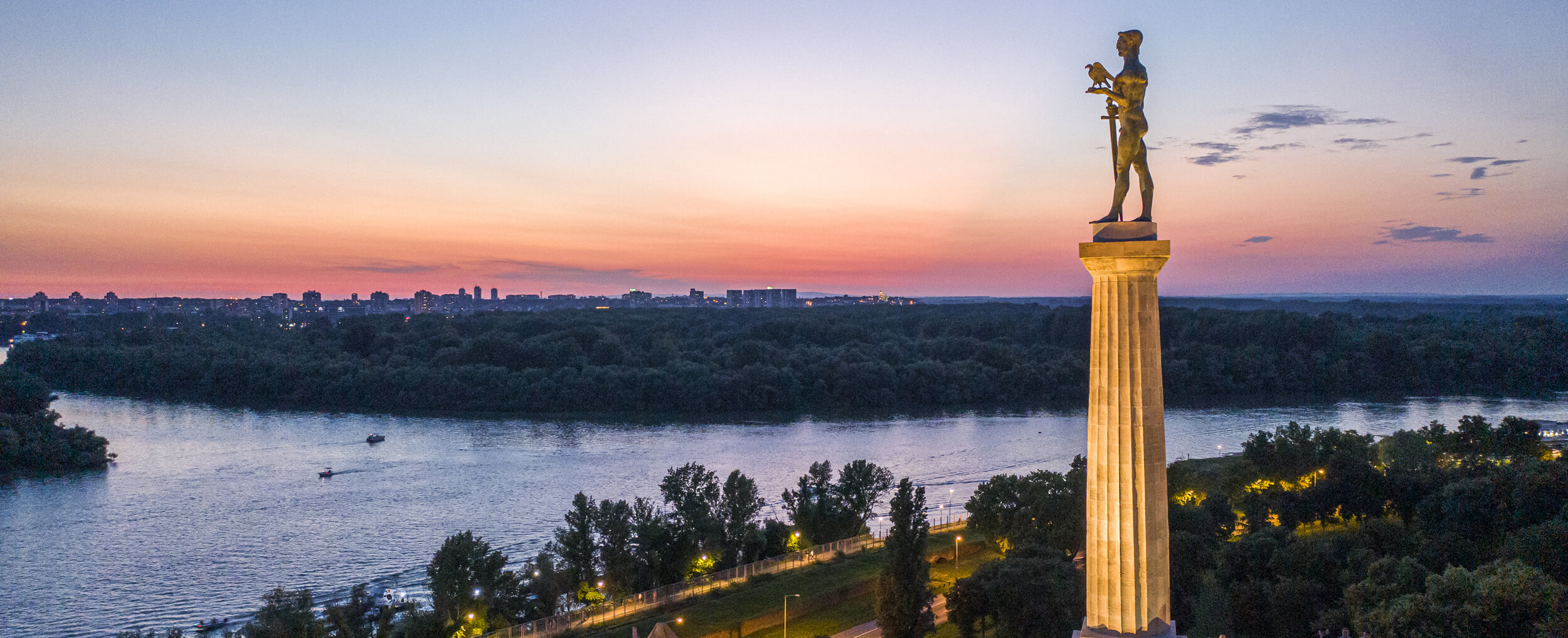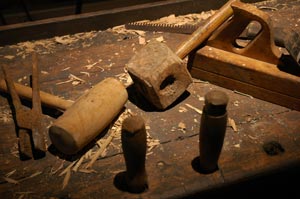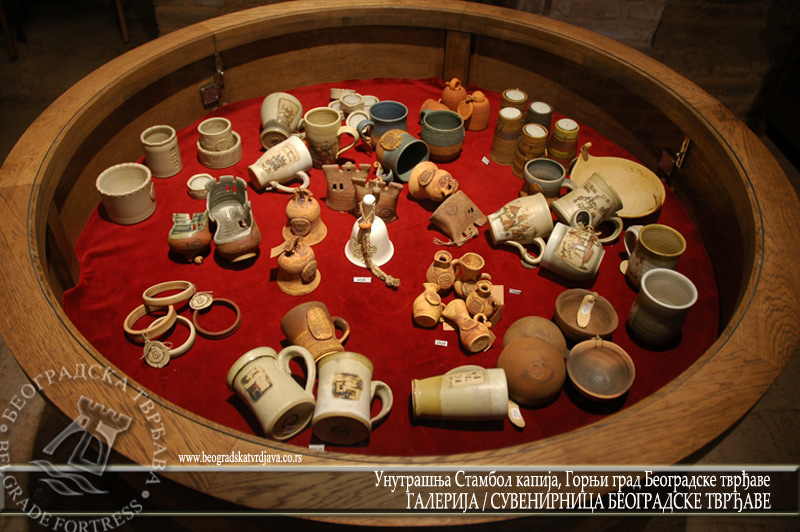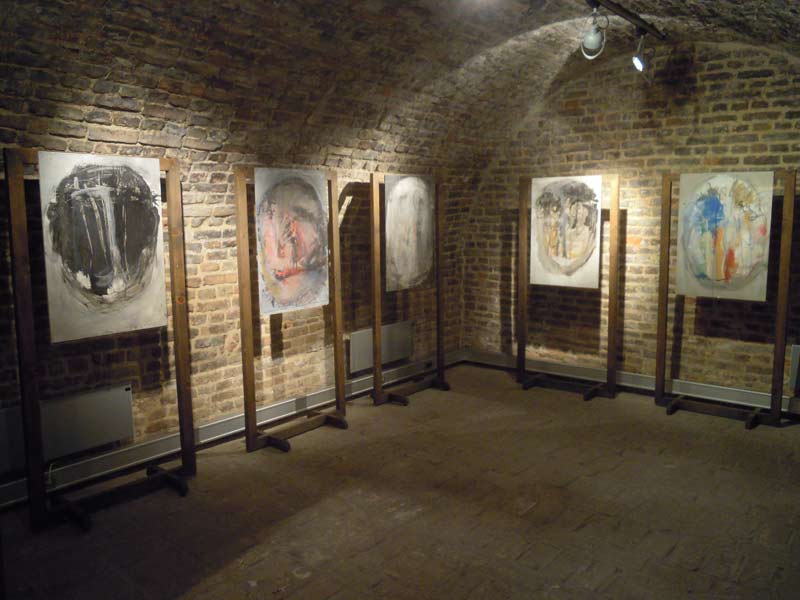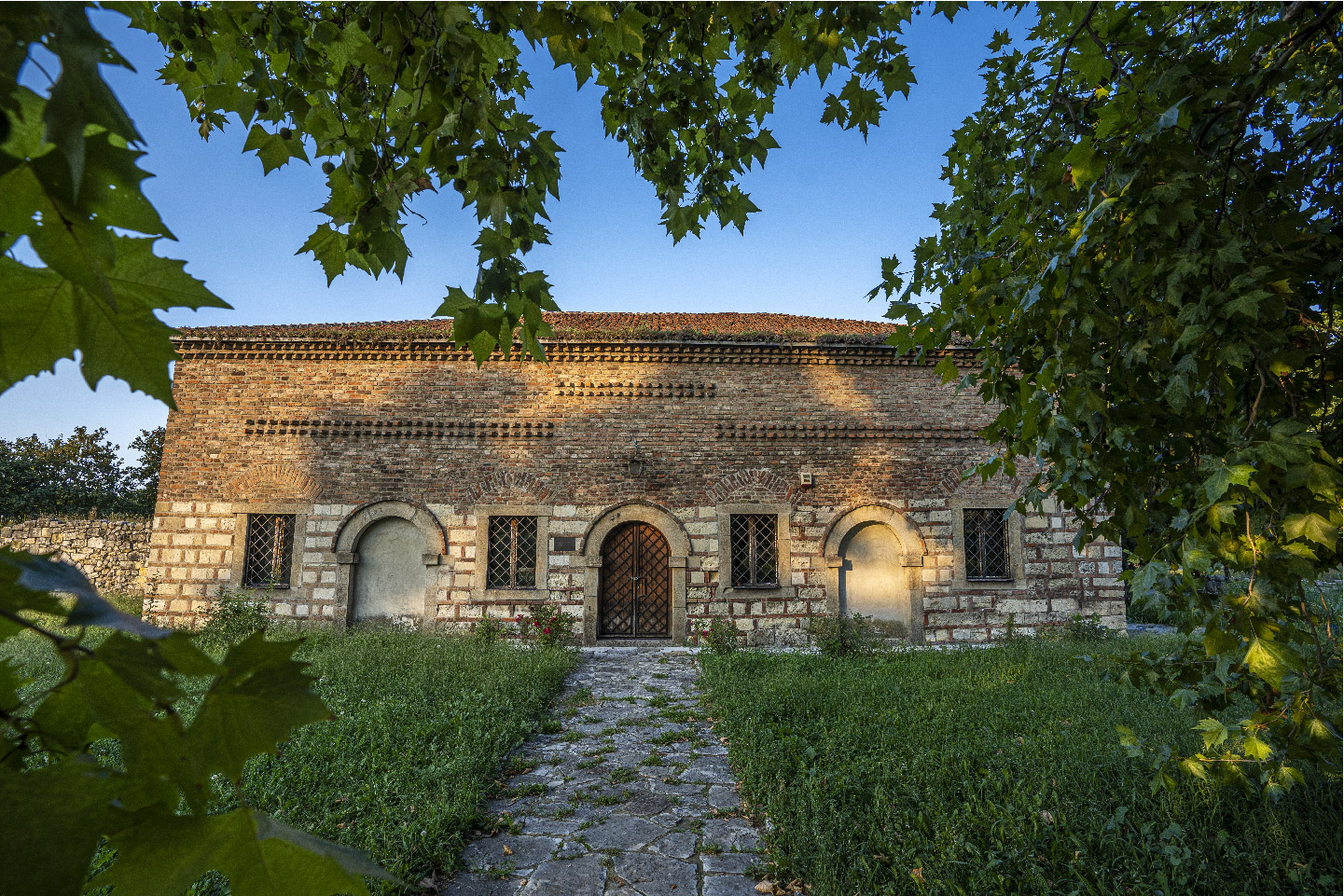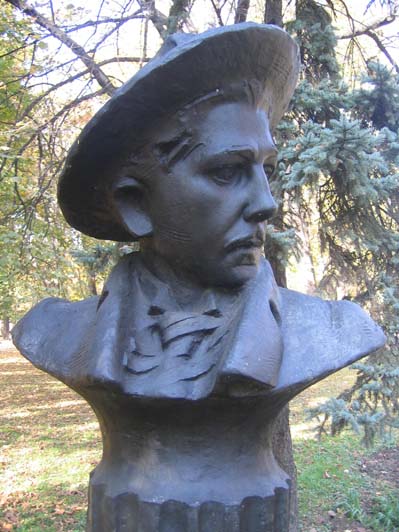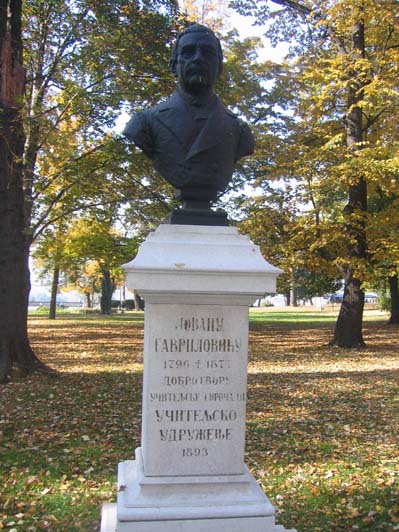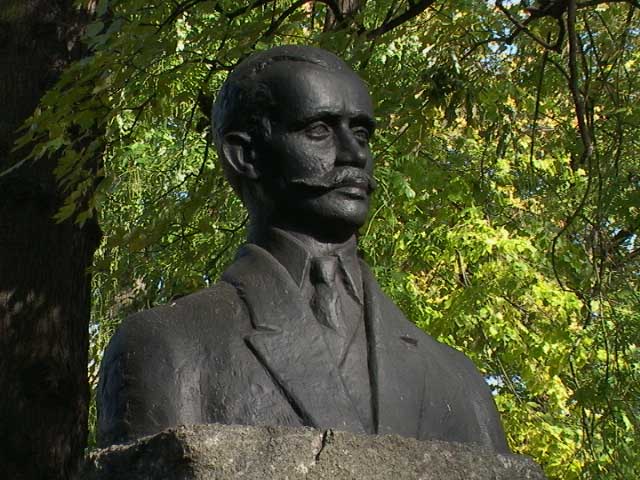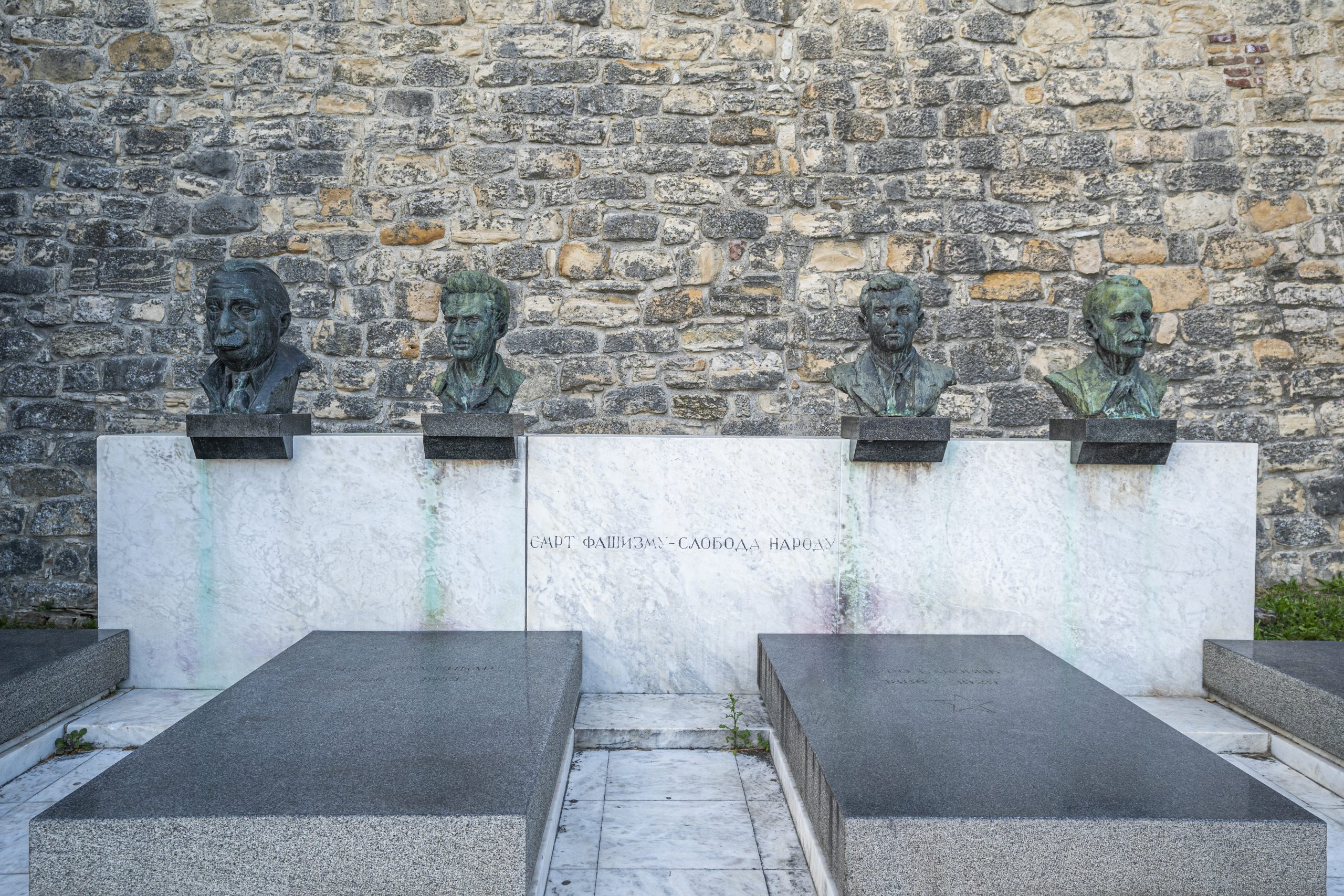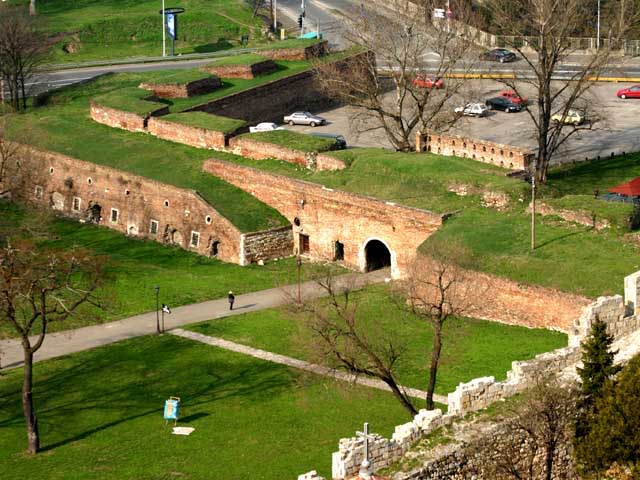-
1. KALEMEGDAN PARK
- Radoje Domanovic Memorial Bust
- Stevan Mokranjac Memorial Bust
- Jovan Ducic Memorial Bust
- Aleksa Santic Memorial Bust
- Milos Crnjanski Memorial Bust
- Janko Veselinovic Memorial Bust
- Simeon Roksandic Memorial Bust
- Jovan Skerlic Memorial Bust
- Jasa Prodanovic Memorial Bust
- Marko Miljanov Memorial Bust
- Fountain Awakening
- Cvijeta Zuzoric Art Pavilion
- Tomb of National Heroes
- Bandstand
- Sava Promenade
- Borisav Stankovic Memorial Bust
- Ivan Goran Kovacic Memorial Bust
- Jovan Subotic Memorial Bust
- Monument to Branko Radicevic
- Belgrade Zoo
- Monument Honouring Serbian and Russian Soldiers Killed in World War I
- Kalemegdan Park
- Japanese Fountain
- Keys Handover Memorial
- Monument of Gratitude to France
- The Fisherman Fountain
-
2. UPPER TOWN
- Old Crafts workshop and gallery
- Souvenir shop at the inner Stambol gate
- Belgrade Fortress Gallery in the Inner Stambol Gate
- Remains of Despot Stefan Lazarevic Castle
- Despot Gate and Castellan Tower
- Upper Town’s Small Gate
- The Building which Houses the Institute for the Protection of Cultural Monuments, Belgrade
- Karadjordje`s Gate
- Leopold Gate
- Zindan Gate Complex
- Monument to Despot Stefan Lazarevic
- Defterdar Gate
- Sokollu Mehmed Pasha Fountain
- Memorial Plaque Dedicated to the Defence against Turkey
- The Victor Monument
- Scale Model of Despot Stefan Lazarevic Castle
- Ravelin of the Royal Gate
- Royal Gate
- The Great/Roman Well
- Damat Ali Pasha Turbeh
- Fortress Cannon
- Remains of Roman Castrum
- Baroque Gate
- Sahat Gate
- Sahat Tower
- Military Museum
- Inner Stambol Gate
- Ancient Lapidarium
- Bunker
- The Great Ravelin Guardhouse
- Great Ravelin
- Outer Stambol Gate
-
3. LOWER TOWN
- Complex of Lower Town Eastern Gate
- Dark Gate
- Sava Gate
- St. Jakov`s Bastion
- Military Kitchen
- Lower Town
- Ruzica Church
- Saint Petka Chapel
- Ossuary of the Defenders of Belgrade
- Jaksic Tower
- Amam — Old Turkish Bath
- The Great Gunpowder Warehouse
- Vidin Gate
- Gate of Charles VI
- Nebojsa Tower
- Eastern Suburbs
- Remains of the Metropolitan Court
- Coastal Rampart
-
4. FOR KIDS
-
5. RESTAURANTS/CAFFES
-
6. SPORTS
Medieval Wharf
The wharf extended at the outer side of the north-eastern rampart, from the Nebojsa Tower.
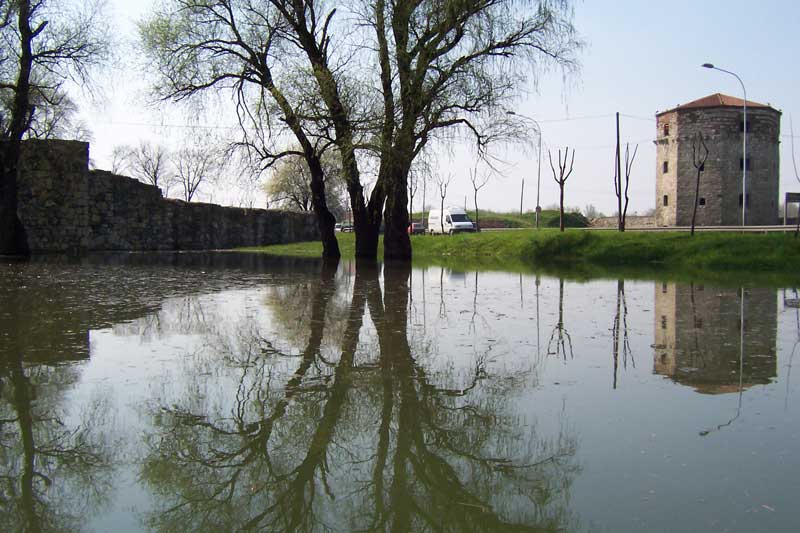 Read more
Read more
Small Gunpowder Magazine in the Lower Town
Right beside the Big Powder Magazine, beneath “Victor” monument in the west part of the Lower Town, a smaller powder magazine was built as a part of the Austrian reconstruction. It was demolished during the bombardment of Belgrade in 1944.
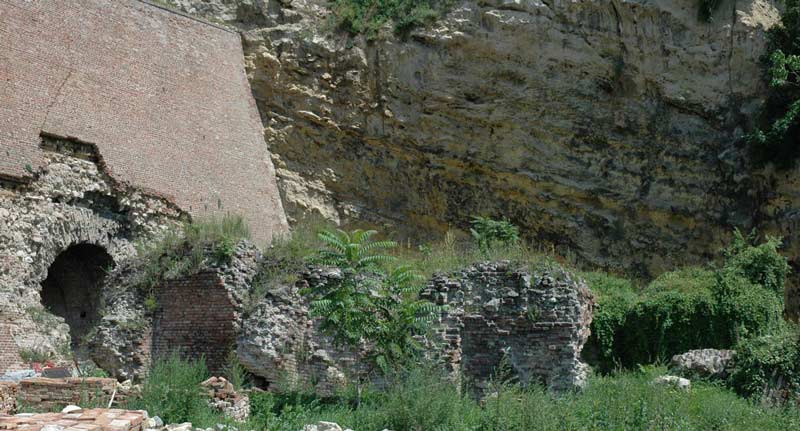 Read more
Read more
Remains of the Lower Town Northeastern Rampart
The rampart is preserved in the height from two to five metres, but because of the extensive levelling works in the first half of the eighteenth century, the largest portion of the rampart remained bellow the ground level.
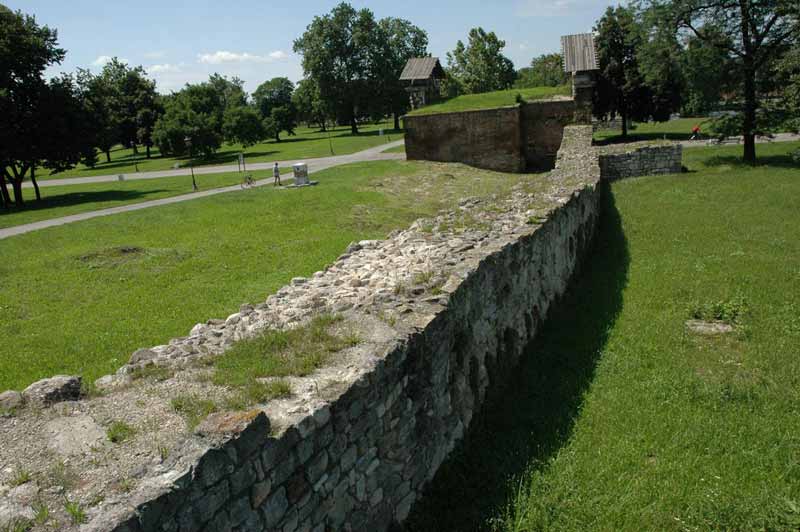 Read more
Read more
Complex of Lower Town Eastern Gate
This complex represents the eastern entrance to the Lower Town from theRiver Danube side, i.e. the Vidin Gate.
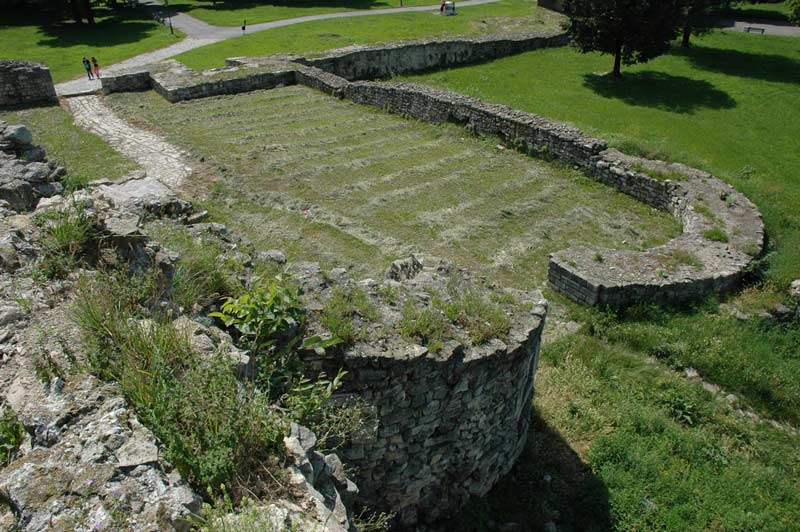 Read more
Read more
Small Staircase Descent
Small Staircase Descent is a part of the outer fortifications on the Sava slope.
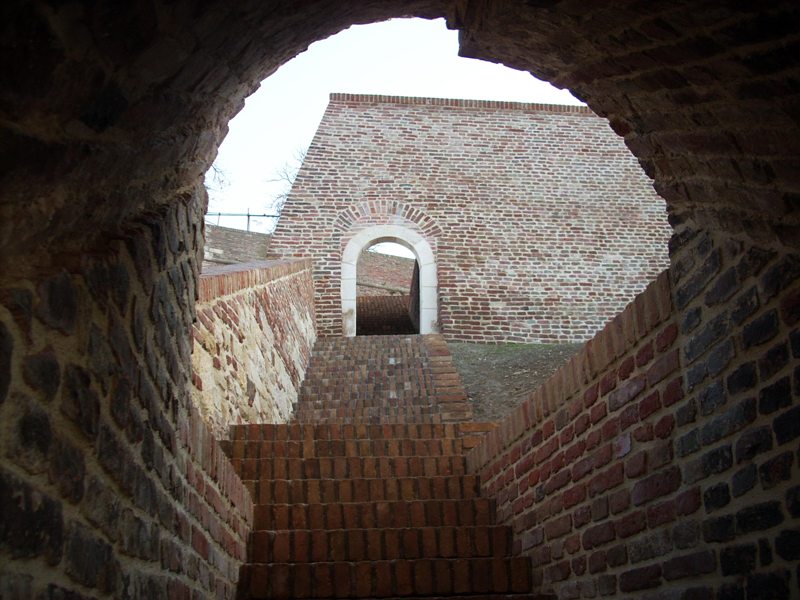 Read more
Read more
Big Staircase Descent
Big Staircase Descent is now the shortest communication between ports on the Sava River and Upper fortifications.
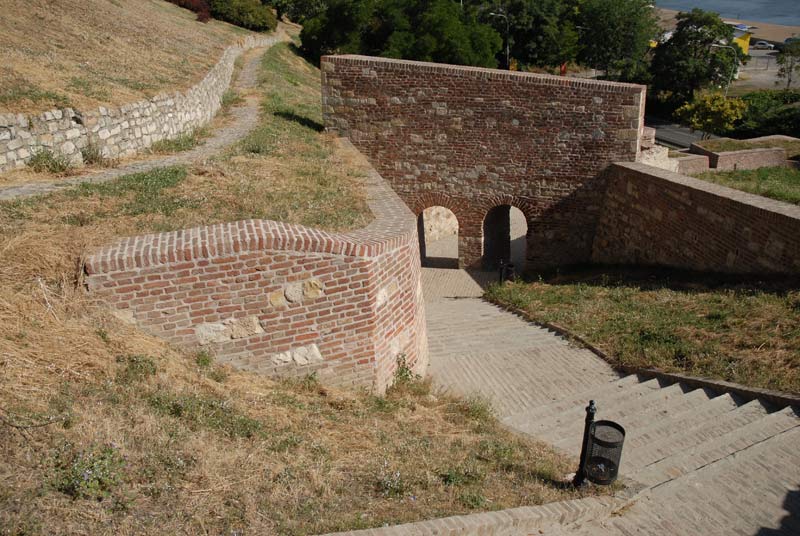 Read more
Read more
Dark Gate
On the old plans this gate is marked as Karanlik kapuso or Dark Gate, which fully corresponds to its appearance.
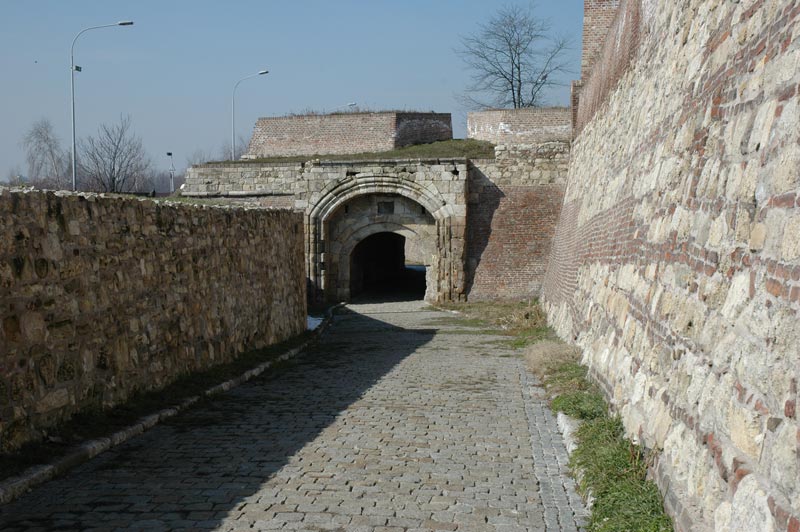 Read more
Read more
Sava Gate
Sava Gate is located at the main southern entrance, which is headed toward along the Sava river to the Western Suburb and further to the Lower Town.
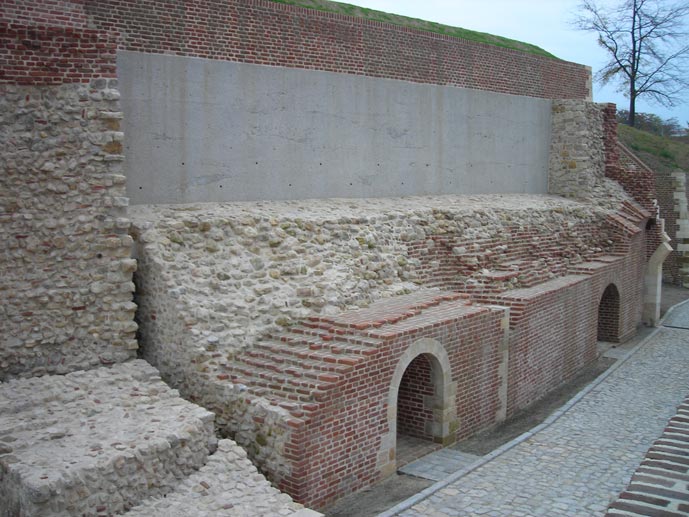 Read more
Read more
St. Jakov`s Bastion
The bastion makes a part of the coastal rampart built upon the project of Andrea Cornaro at the end of the seventeenth century.
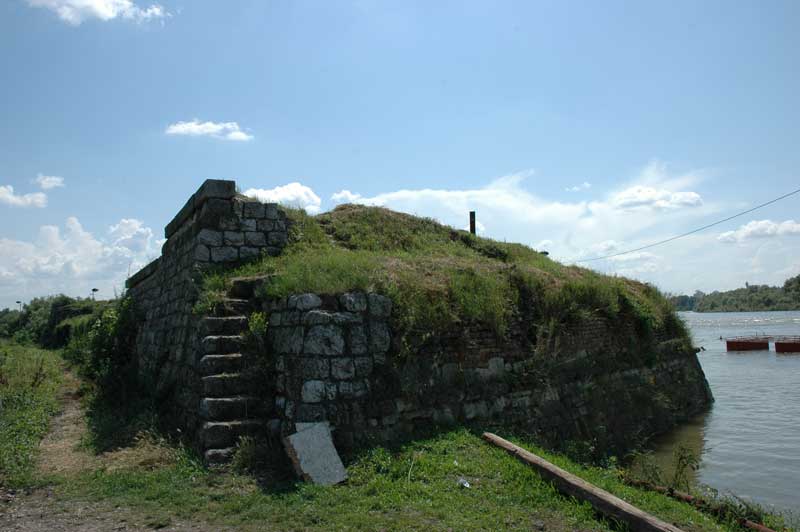 Read more
Read more
Prolom
The latest findings made by archaeologists during additional explorations of the South-East Rampart of the Upper Town of the Belgrade Fortress are the remains of the 18th-century blockhouse, a construction most similar to a modern bunker.
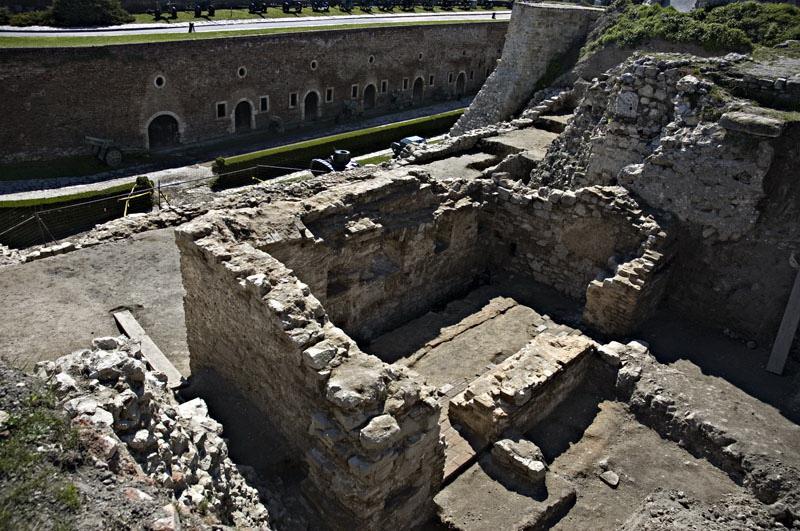 Read more
Read more
Main Guards Building
The building, which housed the command of the Belgrade Fortress – the Main Guard Building, was erected during the Austrian reconstruction of the fortress during the thirties of the eighteen century.
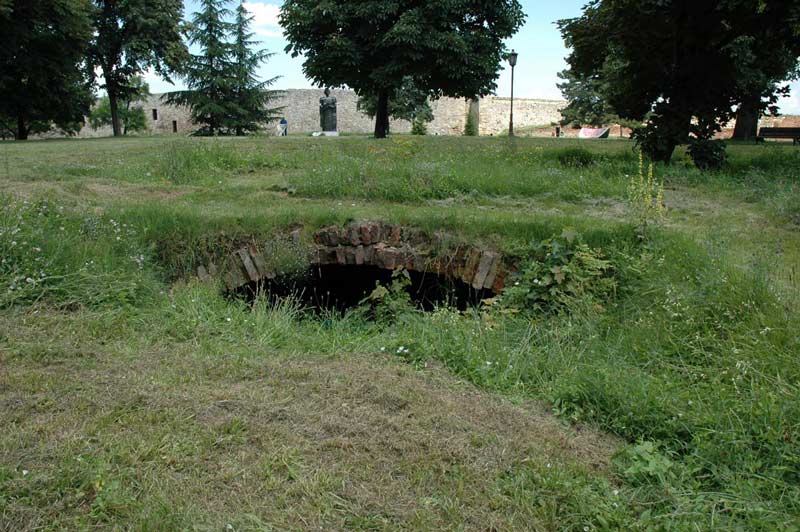 Read more
Read more
Small Gunpowder Magazine in the Upper Town
This small powder magazine was located in the eastern corner of the Upper Town, between the remains of the two barracks up until the start of the Second World War.
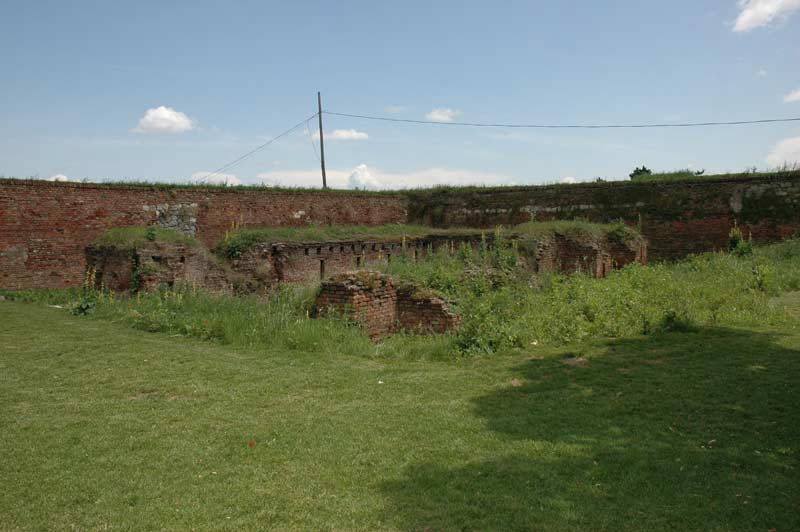 Read more
Read more
Barracks near Northeastern Part of the Upper Town
The barracks built by Austrians during the twenties of the eighteenth century.
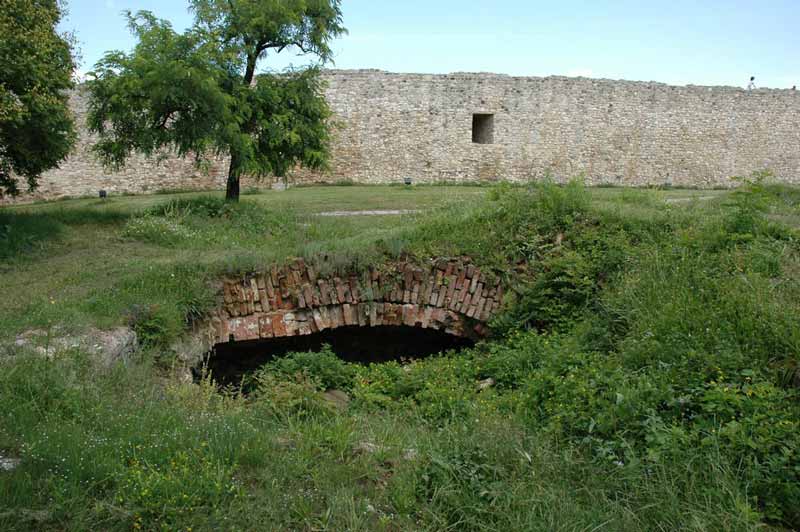 Read more
Read more
Barracks at the Southeastern Part of the Upper Town
The two storey barracks building with a baroque façade was erected parallel to the southeastern rampart in the year 1720. It was pulled down at the end of the same century, when Turks re-established their rule over the Fortress.
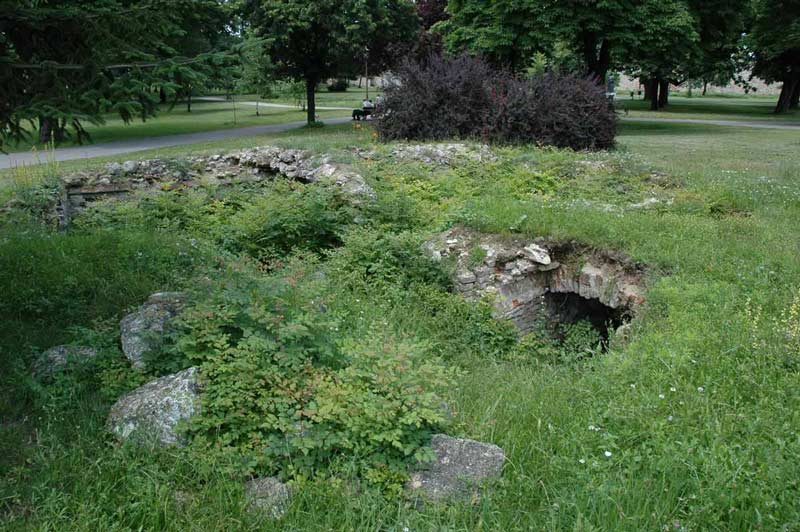 Read more
Read more
Stefan Lazarevic Southern Gate
The base of the south-eastern rampart surrounding the Upper Town was built between 1404 and 1427 during despot’s rule over Belgrade.
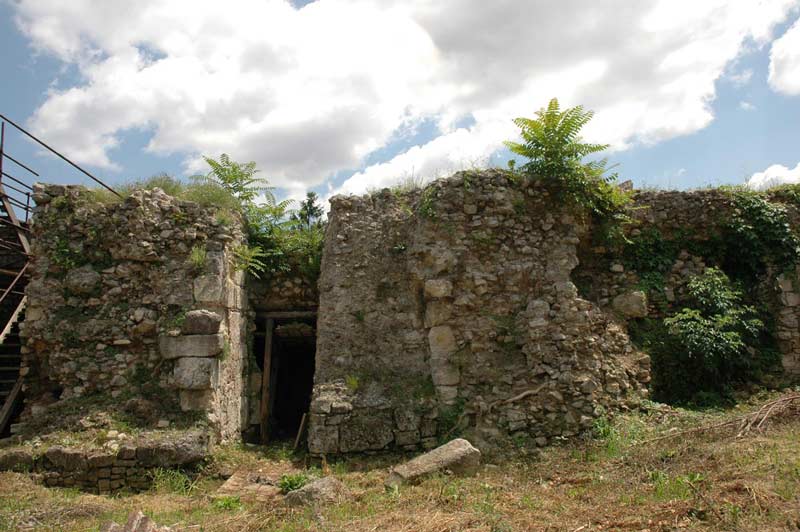 Read more
Read more
Remains of Despot Stefan Lazarevic Castle
The remains of Stefan Lazarevic Castle are still preserved in the northwestern part of the Upper Town.
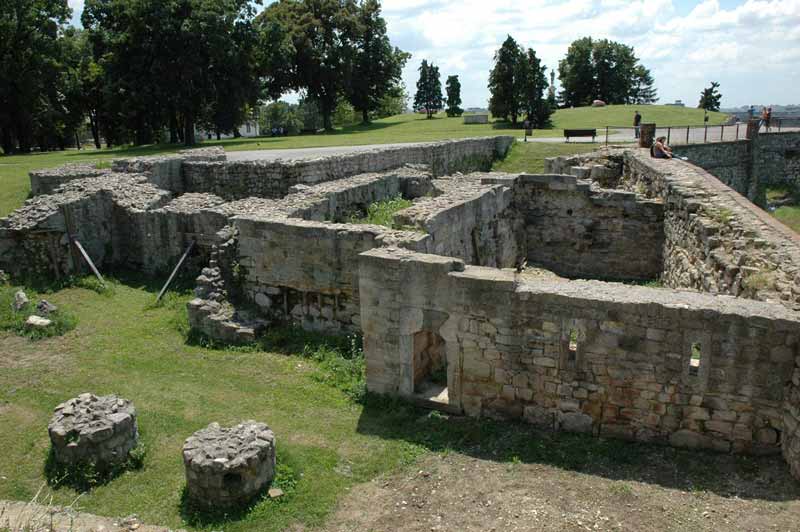 Read more
Read more
Despot Gate and Castellan Tower
Despot Gate and Castellan Tower is often referred as to Eastern Upper town’s Gate.
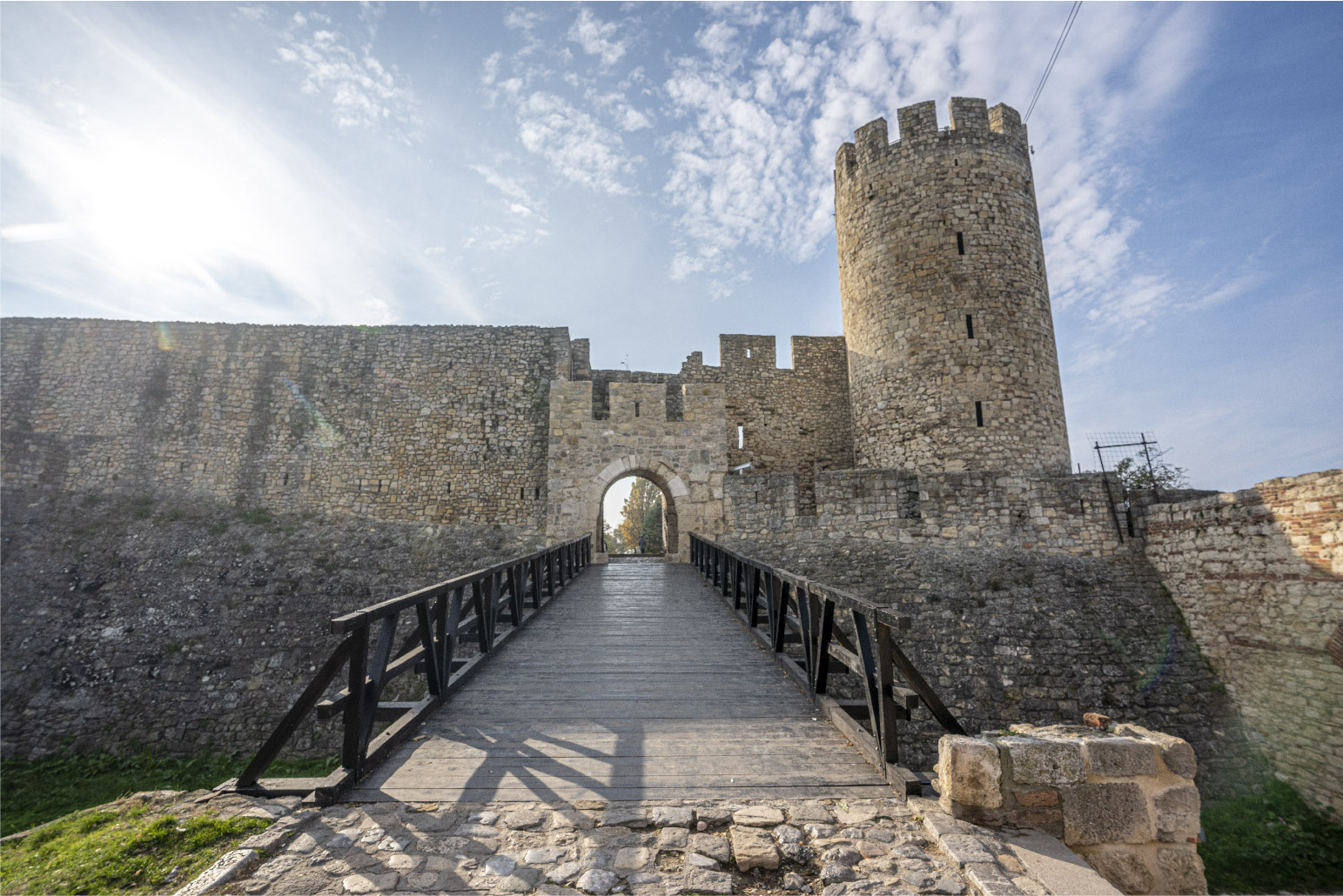 Read more
Read more
Upper Town’s Small Gate
Upper Town’s Small Gate is located between “Victor” monument and the building which houses the Institute for the Protection of Cultural Monuments, Belgrade, surrounded by a former medieval rampart.
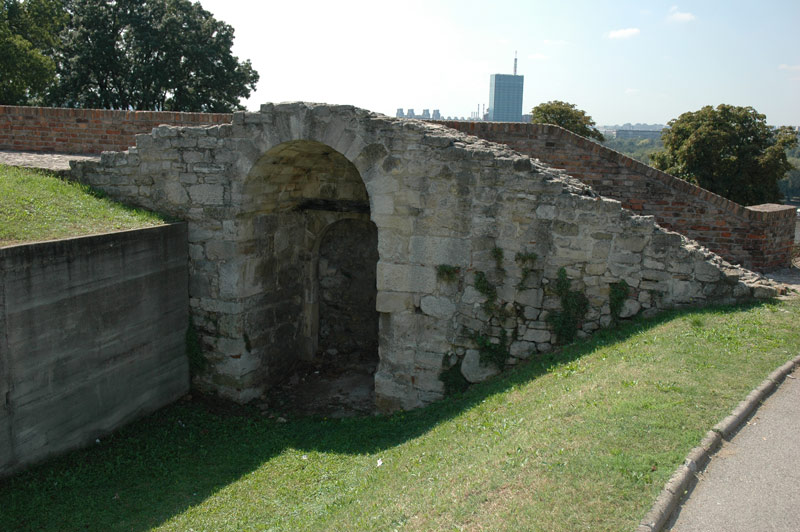 Read more
Read more
The Building which Houses the Institute for the Protection of Cultural Monuments, Belgrade
This Building was built at the end of the nineteenth century for the needs of Serbian army.
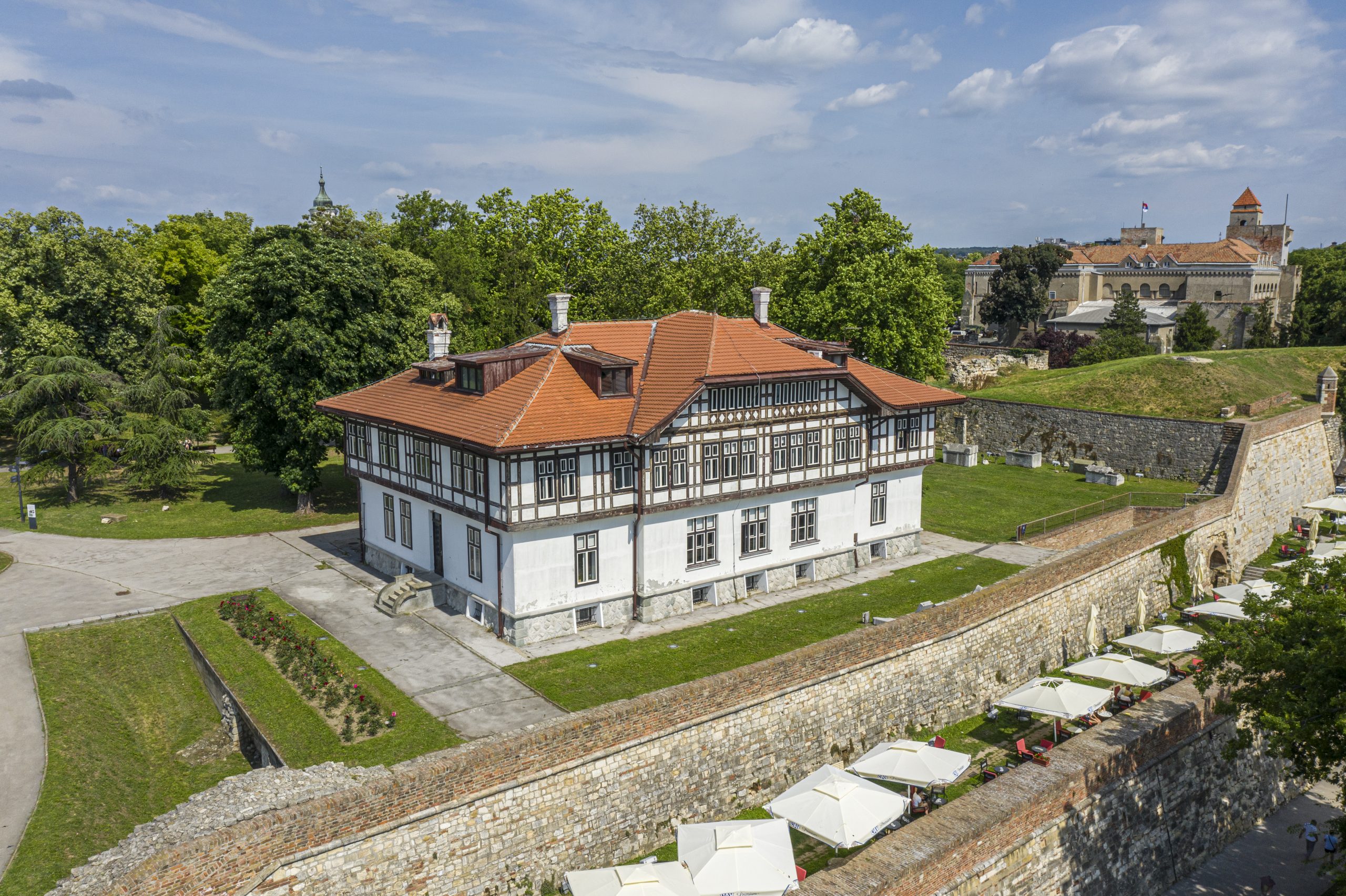 Read more
Read more
Karadjordje`s Gate
This gate, along with the bridge, serves as a passage from the Large Kalemegdan to the Fortress.
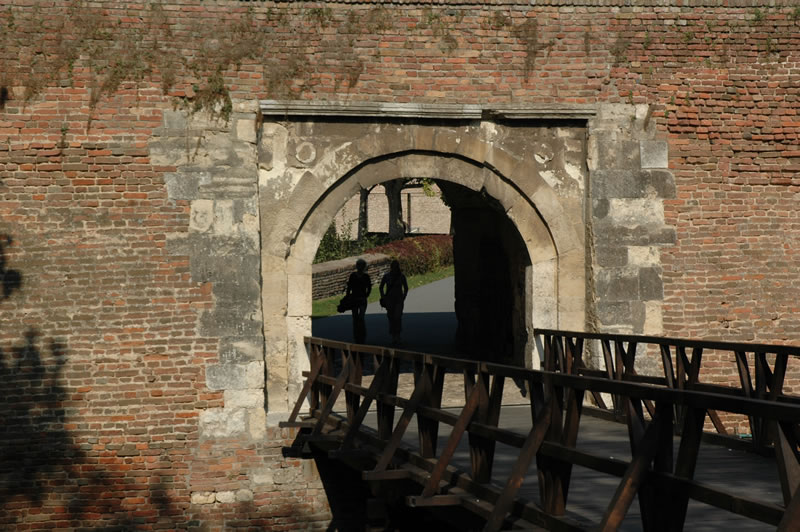 Read more
Read more
Stevan Mokranjac Memorial Bust
Stevan Mokranjac Memorial Bust was put up in 1964. It is the work of sculptor Rista Stijovic.
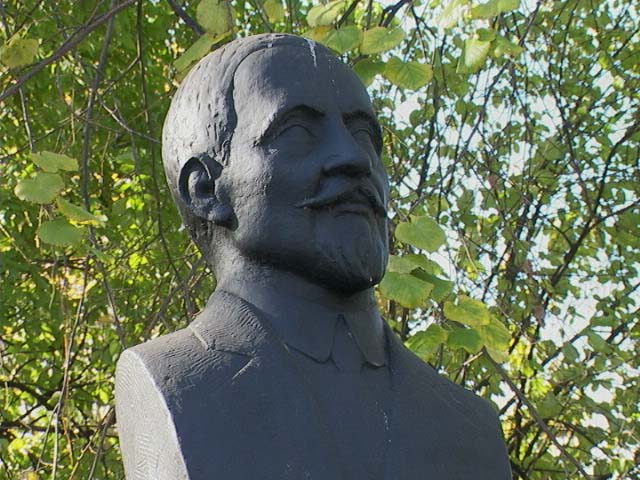 Read more
Read more
Kosta Tausanovic Memorial Bust
Kosta Tausanovic Memorial Bust is the work of sculptor Djordje Jovanovic from 1905. Kosta Tausanovic (1854–1902) was a prominent Serbian politician, minister and business man.
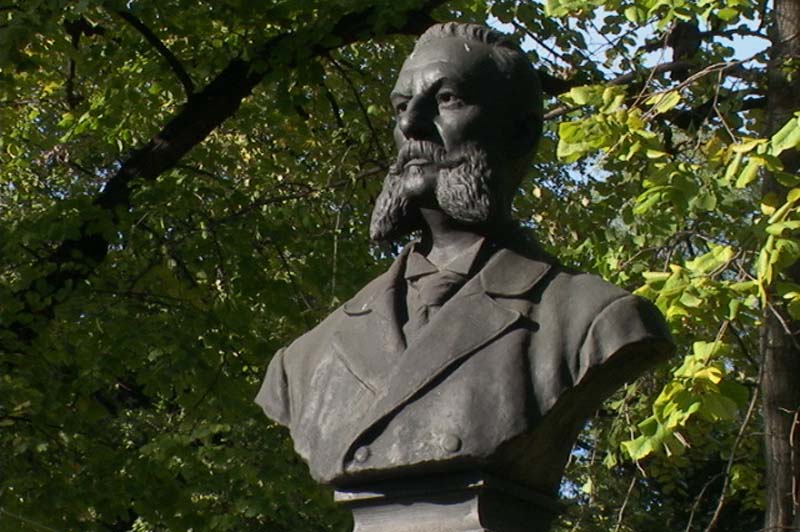 Read more
Read more
Jovan Ducic Memorial Bust
Jovan Ducic Memorial Bust was put up in 1993 to commemorate the 50th anniversary of his death.
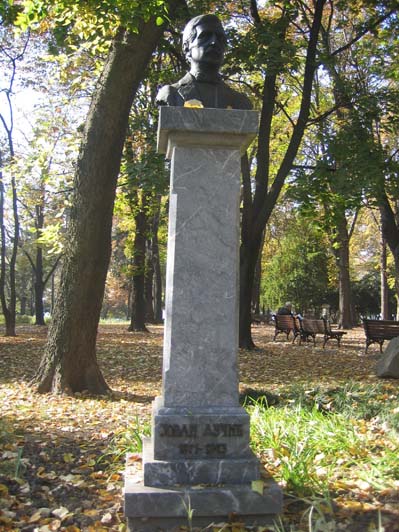 Read more
Read more
Aleksa Santic Memorial Bust
Aleksa Santic Memorial Bust was put up in 1986. It is the work of sculptor Aleksandar Zarin.
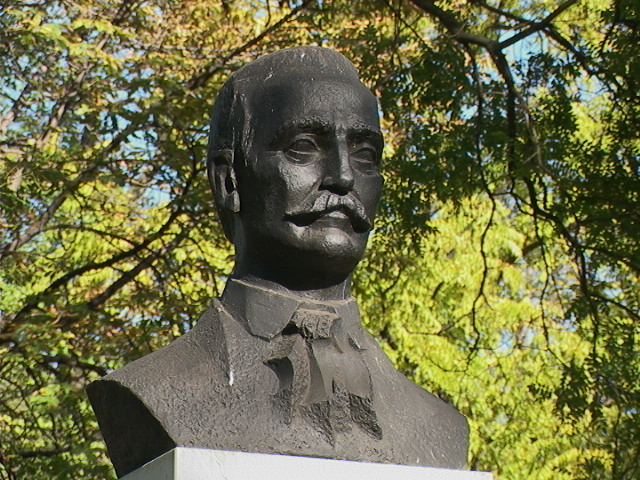 Read more
Read more
Milos N. Djuric Memorial Bust
Milos N. Djuric Memorial Bust was put up in 1978. It is the work of sculptor Miodrag Zivkovic.
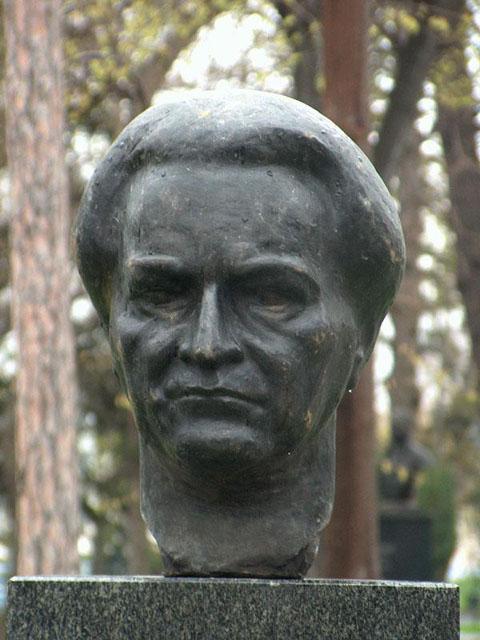 Read more
Read more
Milos Crnjanski Memorial Bust
Milos Crnjanski Memorial Bust was put up on October 25th, 1993 to commemorate the centenary of his birth. It is the work of sculptor Drinka Radovanovic.
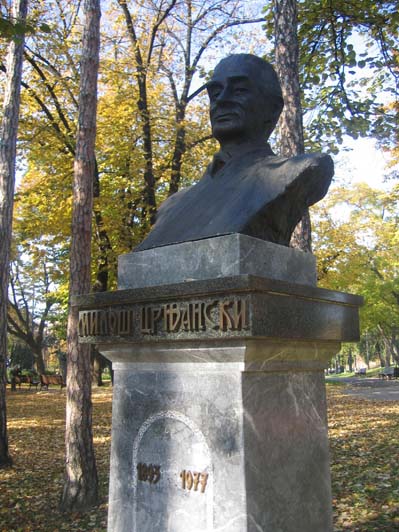 Read more
Read more
Janko Veselinovic Memorial Bust
Janko Veselinovic Memorial Bust represents the work of Perisa Milis dating from 1935.
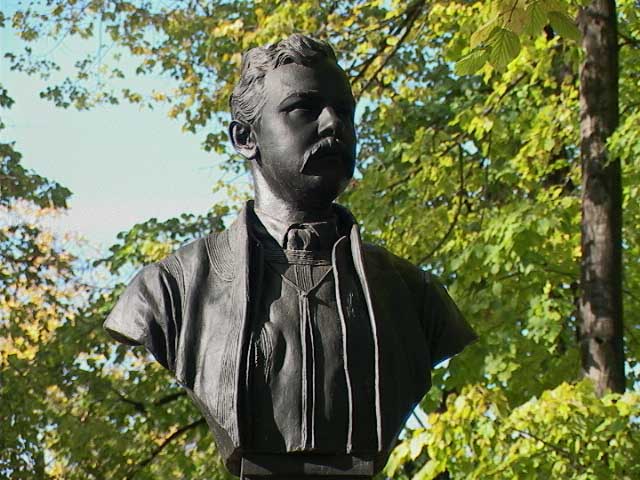 Read more
Read more
Simeon Roksandic Memorial Bust
Simeon Roksandic Memorial Bust is actually a self-portrait, put up in the Small Kalemegdan in 1965.
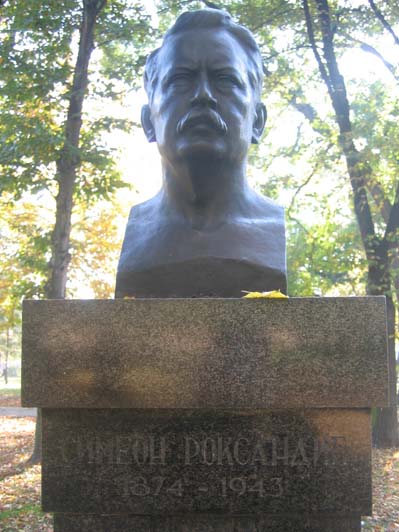 Read more
Read more
Djura Jaksic Memorial Bust
Djura Jaksic Memorial Bust is the work of Petar Ubakvic, put up in 1896 with the financial support of the Typographic Choral Association “Jaksic”.
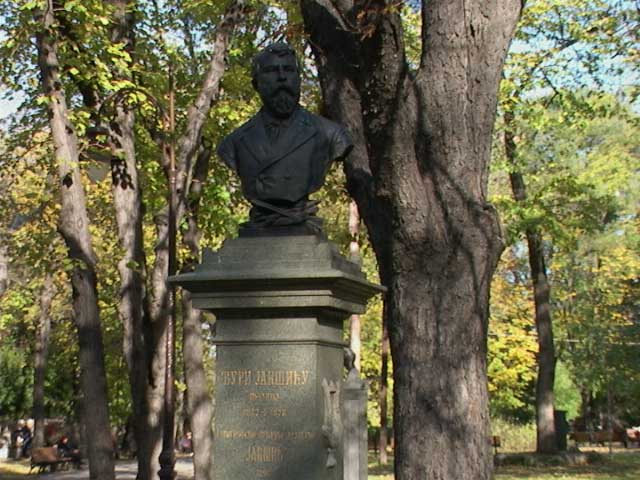 Read more
Read more
Vojislav Ilic Memorial Bust
Vojislav Ilic Memorial Bust was put up in 1903 with the funds provided by the Board of Belgrade Girls.
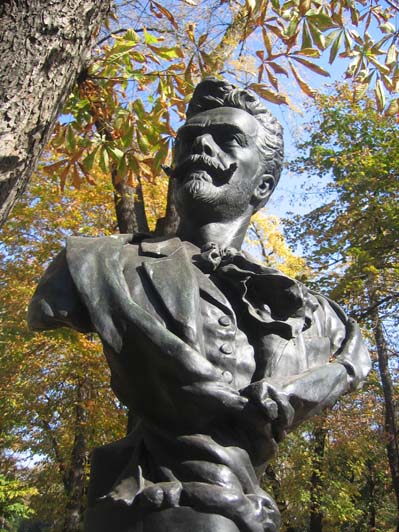 Read more
Read more
Djura Danicic Memorial Bust
Djura Danicic Memorial Bust is the work of sculptor Petar Ubavkic dating from 1891.
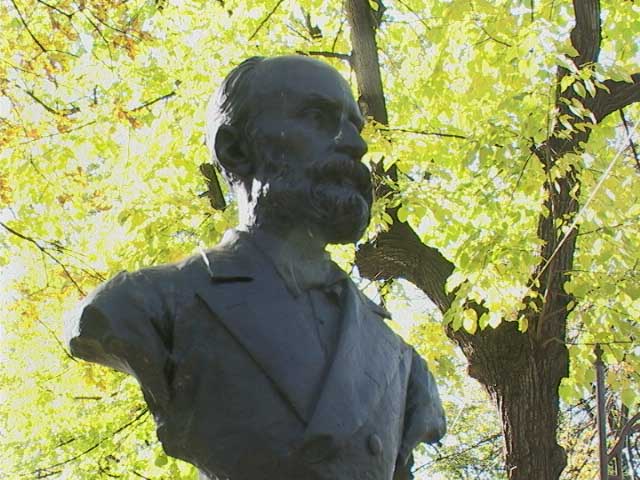 Read more
Read more
Jasa Prodanovic Memorial Bust
Jasa Prodanovic Memorial Bust is the work of sculptor Sreten Stojanovic from 1958.
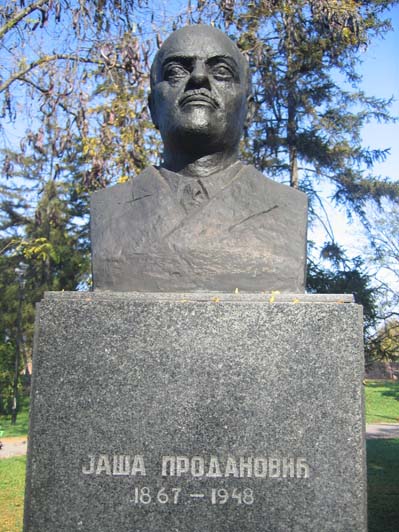 Read more
Read more
Marko Miljanov Memorial Bust
Marko Miljanov (1833–1901) was a Montenegrin hero, general, duke and writer.
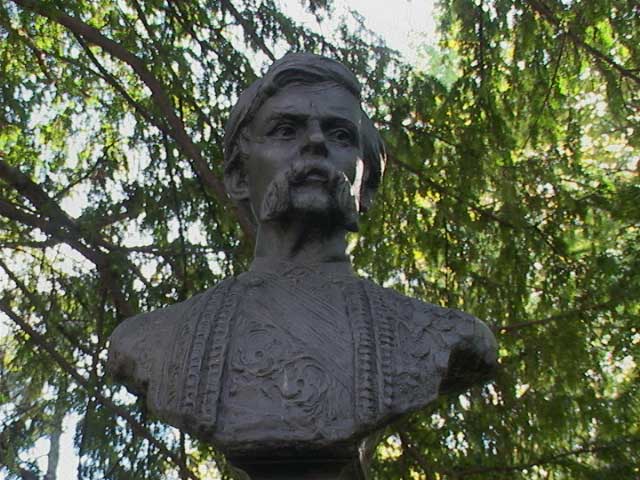 Read more
Read more
Sculpture “Partisan with children”
Sculpture “Partisan with children” is the work of Jelena Jovanovic dating from 1950.
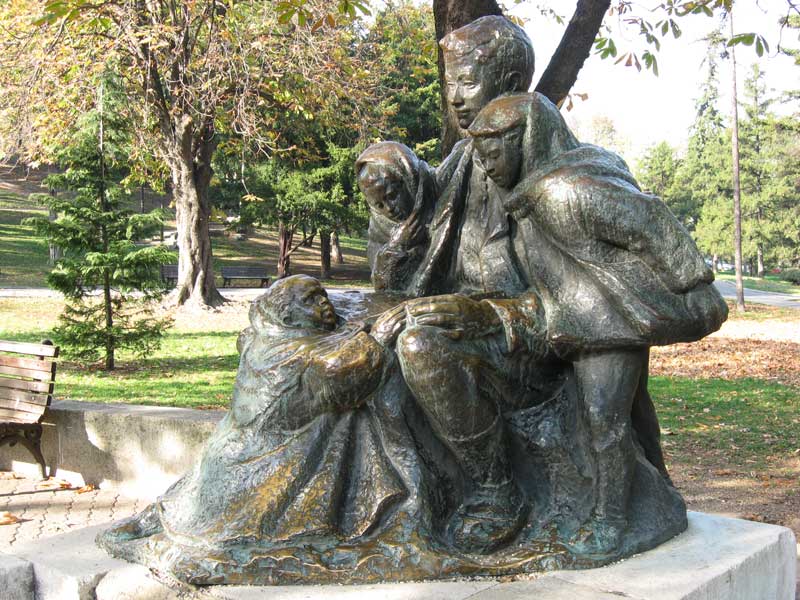 Read more
Read more
Sculpture Weary Soldier
Sculpture “Weary Soldier” was made of bronze in 1935 as a replica of Toma Rosandic’s marble piece which is displayed in the National Museum, Belgrade.
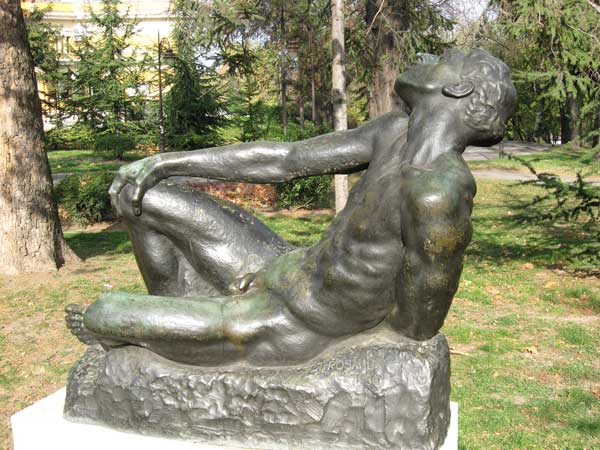 Read more
Read more
The Genius of Death
Decorative statue for the pylon “The Genius of Death” by sculptor Ivan Meštrović was created just before the big International Show in Rome in 1911.
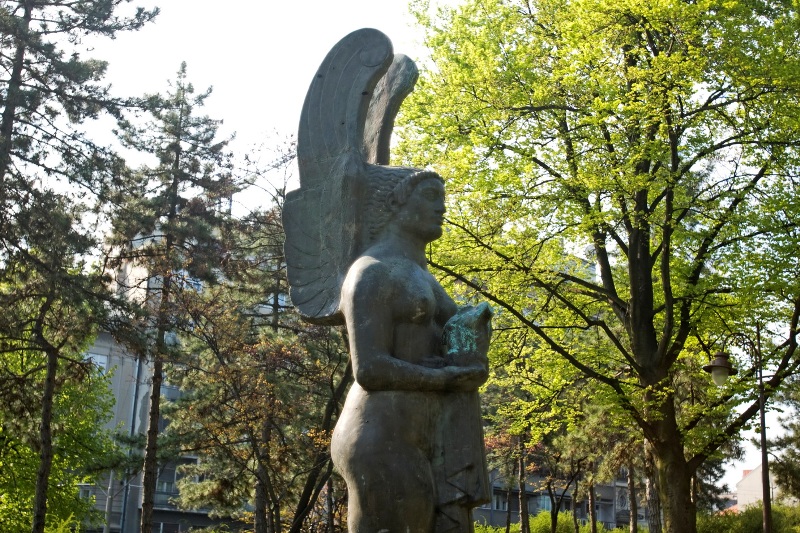 Read more
Read more
Fountain Awakening
Fountain “Awakening” is located in front of the “Cvijeta Zurovic” Art Pavilion. It was made by sculptor Dragomir Arambasic in 1936.
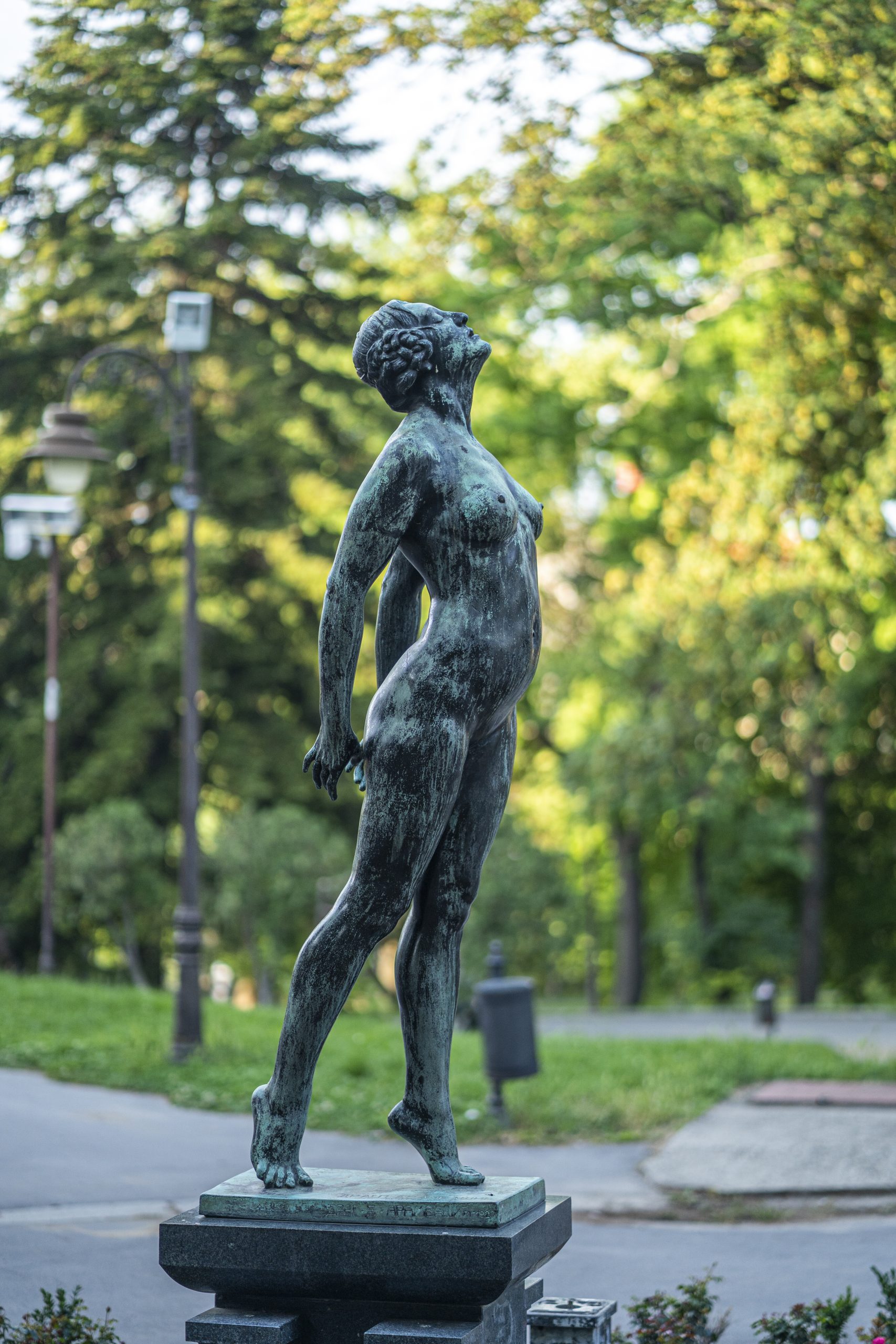 Read more
Read more
Cvijeta Zuzoric Art Pavilion
“Cvijeta Zuzoric” Art Pavilion was built on the Little Kalemegdan in 1928.
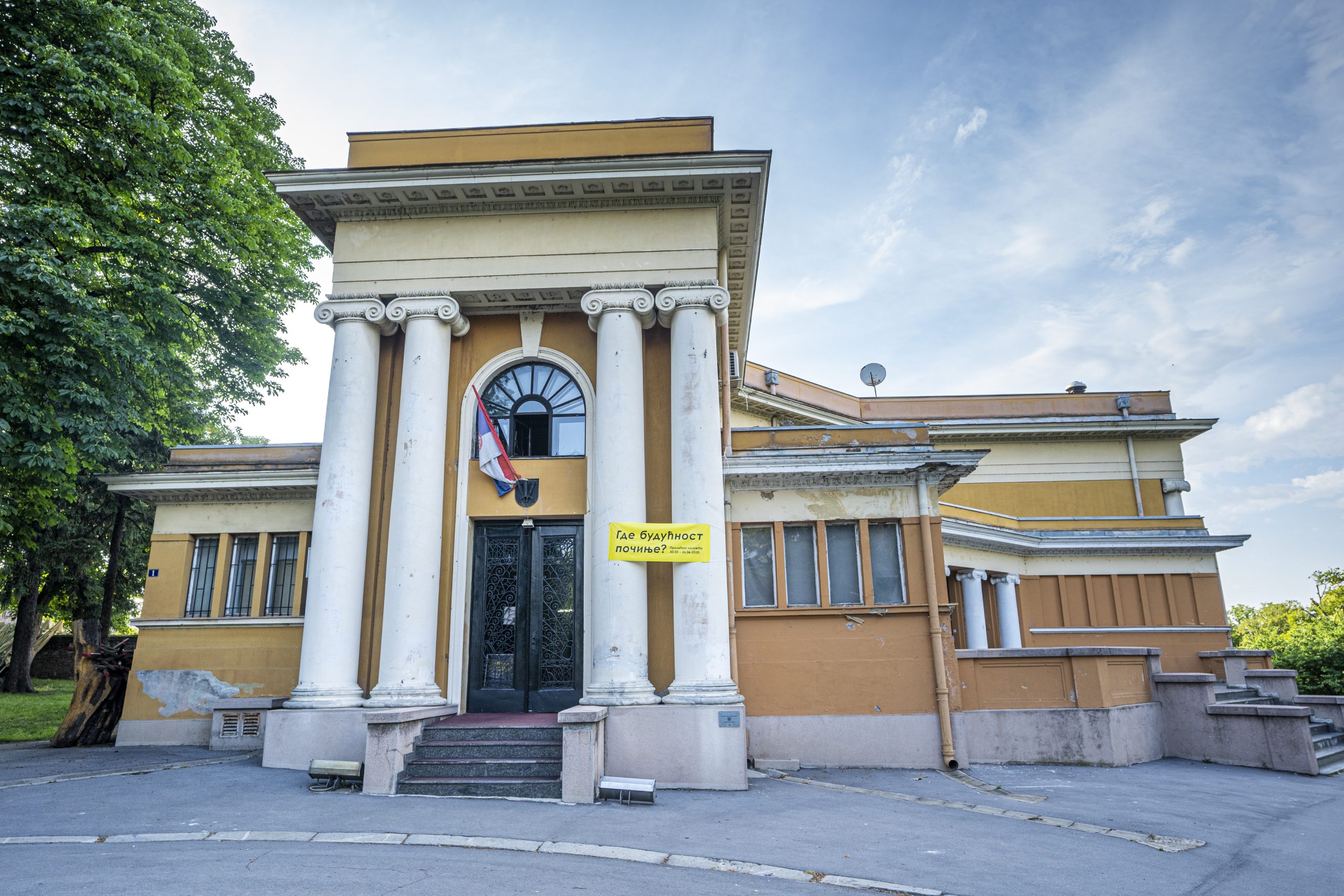 Read more
Read more
Bandstand
It was constructed according to th project of the Institute for the Protection of Cultural Monuments, Belgrade.
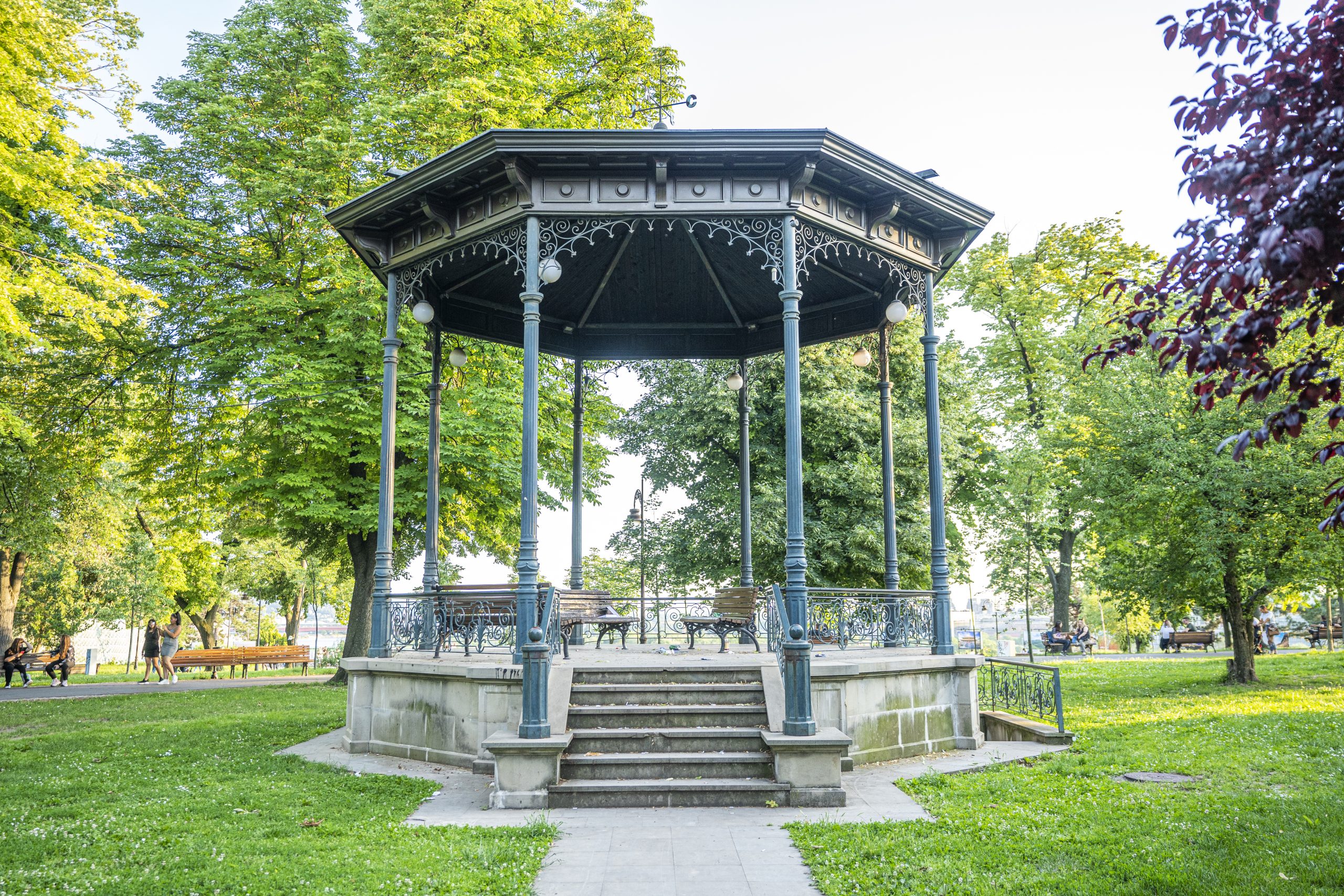 Read more
Read more
Leopold Gate
The Leopold Gate is located in the oldest part of Belgrade’s bastion fortifications
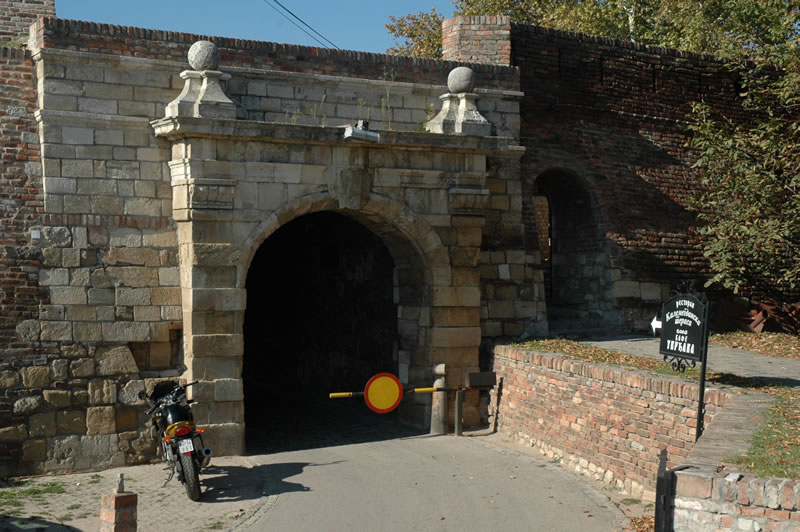 Read more
Read more
Zindan Gate Complex
The Zindan Gate was built in the middle of the 15th century for better protection of the East Gate, which at the time was the main entrance to the city.
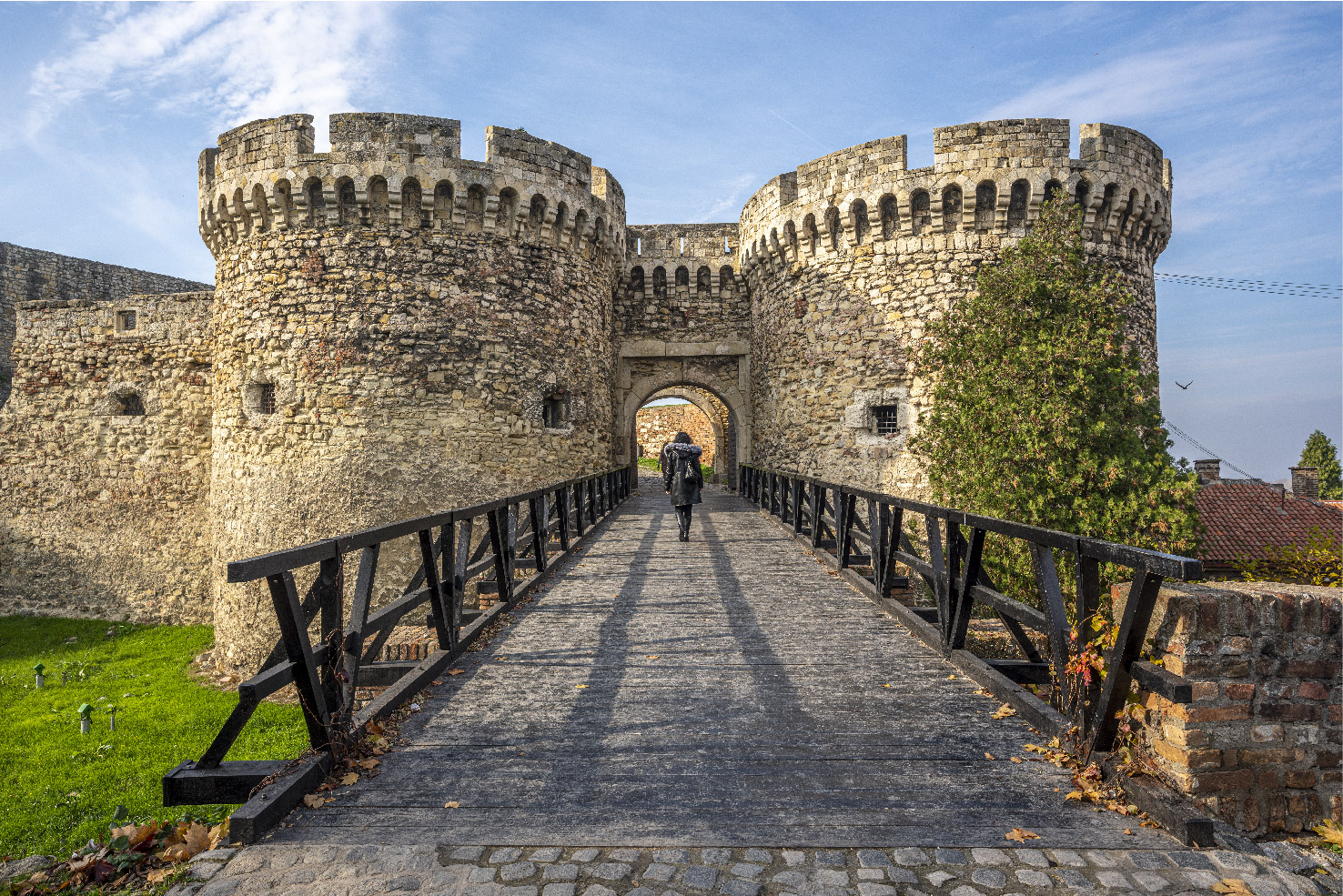 Read more
Read more
Lower Town
The most important part of the settlement, in the riverside area, is surrounded by the ramparts of the Lower Town.
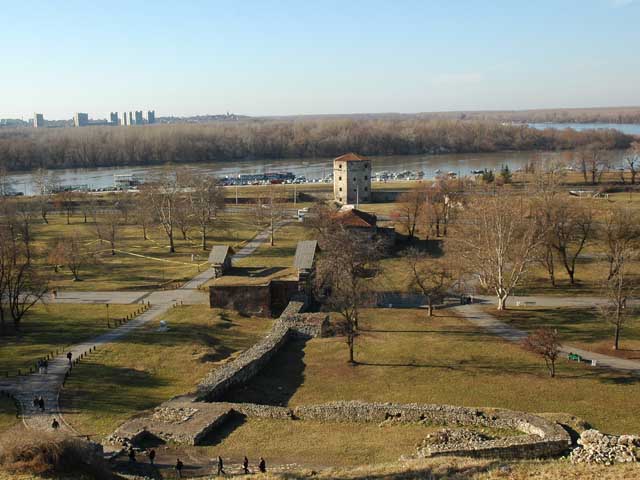 Read more
Read more
Monument to Despot Stefan Lazarevic
The bronze figure of a man with a cloak is a monument paying tribute to the famous Serbian ruler, writer and builder Despot Stefan Lazarevic, during whose government Belgrade became the capital of Serbia for the first time.
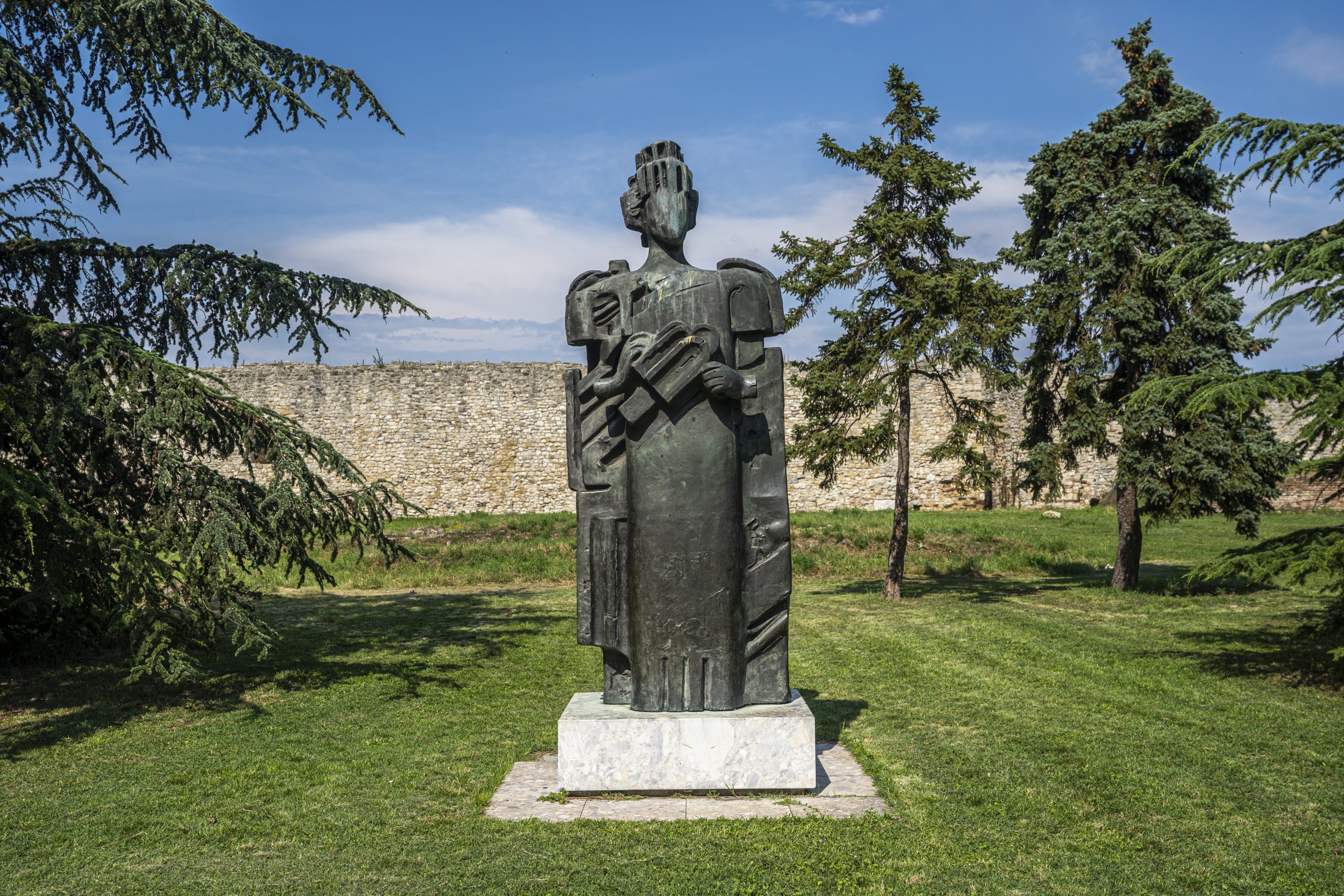 Read more
Read more
Defterdar Gate
The Defterdar Gate is located opposite the Sahat Gate, almost in the middle of the northwestern rampart of the Upper Town. The gate gained its name in the 18th century — defterdar is a Turkish word meaning finance officer or treasurer, especially a provincial accountant general.
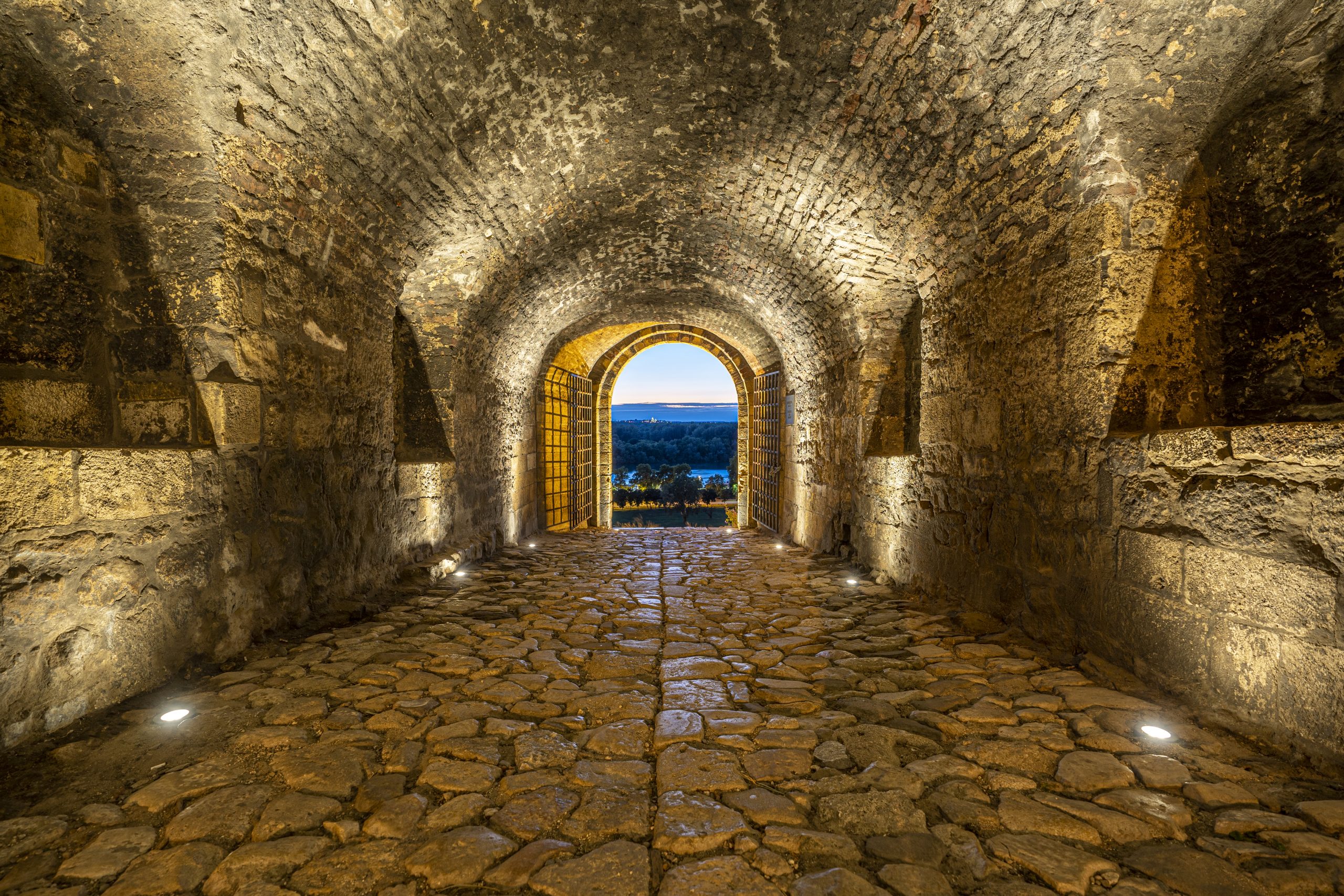 Read more
Read more
Ruzica Church
Ruzica Church, dedicated to the feast of the birth of the Mother of God, is today a revered sanctuary within the walls of the Belgrade Fortress.
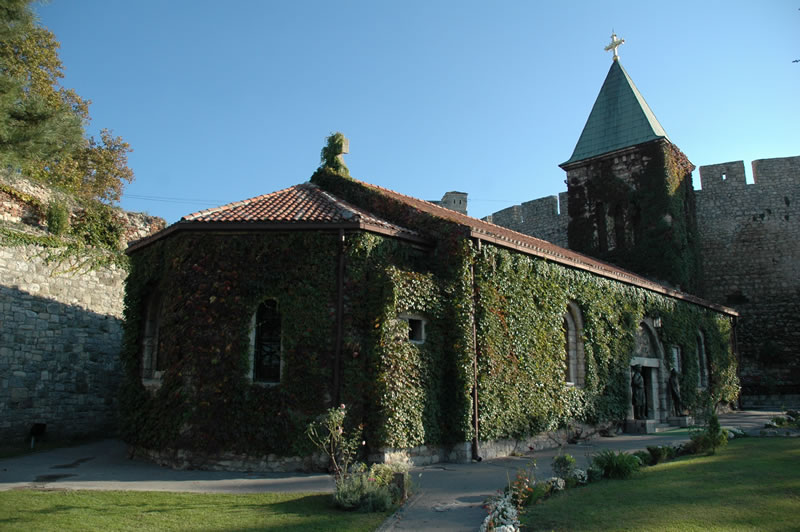 Read more
Read more
Sokollu Mehmed Pasha Fountain
The fountain of Sokollu Mehmed Pasha is the only endowment of this famous Turkish vizier in Belgrade. At the time when it was built, between 1576 and 1577, this part of the fortress looked completely different and so the fountain was located in a moat, under the bridge that led to the main gate of the castle (the remains of this gate are opposite the fountain).
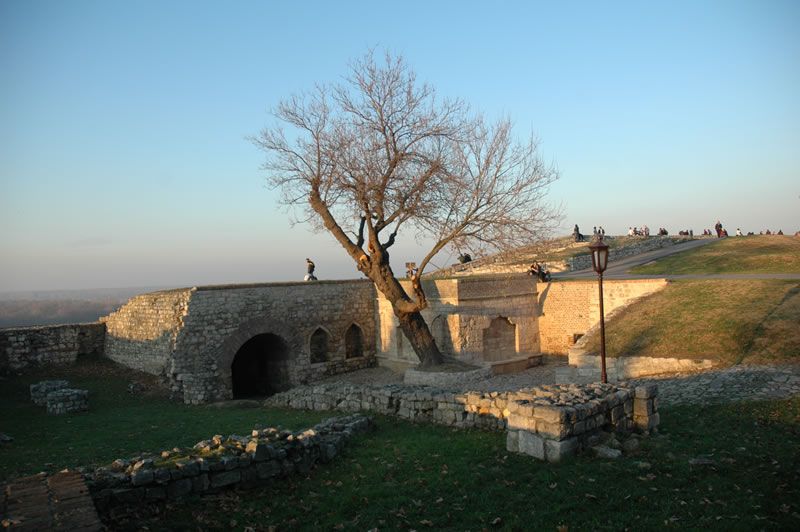 Read more
Read more
Memorial Plaque Dedicated to the Defence against Turkey
Close to the former entrance to the castle of Despot Stefan Lazarevic, near the remains of the drawbridge, a memorial was erected remembering the biggest and most glorious battle in the history of Belgrade, when the city acquired the famous epithet Bulwark of Christendom.
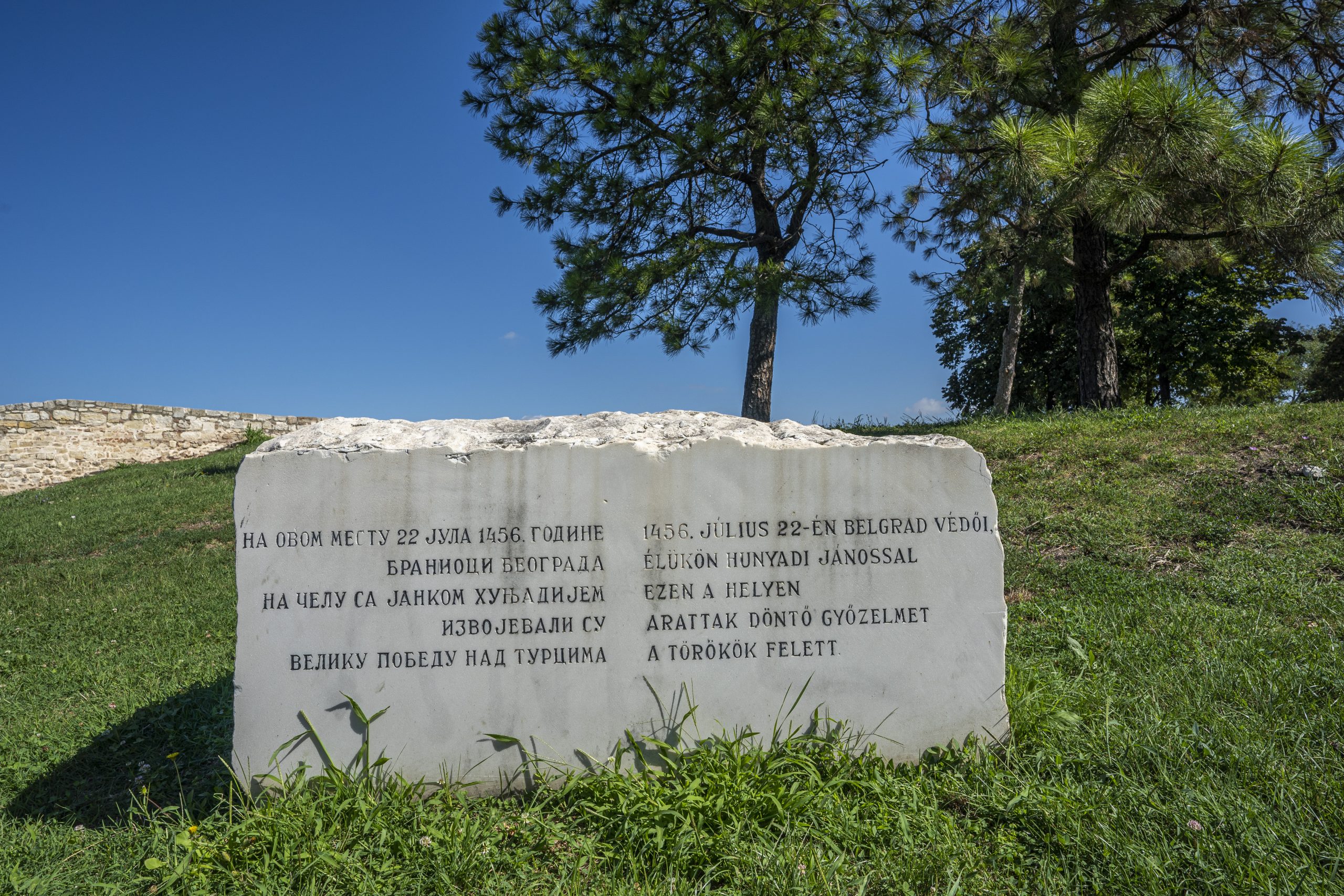 Read more
Read more
The Victor Monument
The ‘Victor’ monument is certainly the most recognisable symbol of Belgrade. It was created in the years before the First World War, but its formation took an unusually long time.
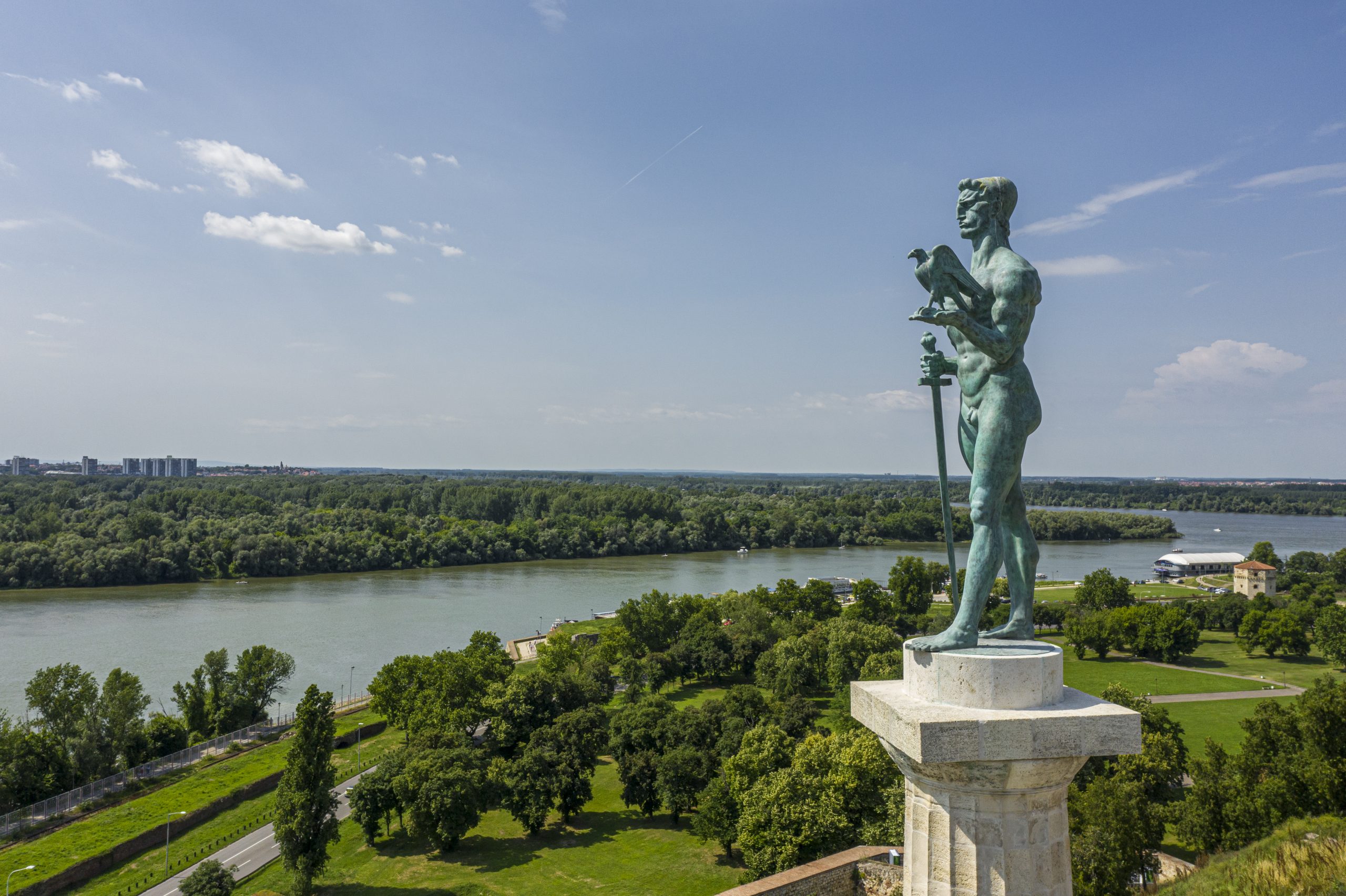 Read more
Read more
Saint Petka Chapel
St. Petka Chapel, together with the Ruzica Church, is one of the most revered sanctuaries in Belgrade.
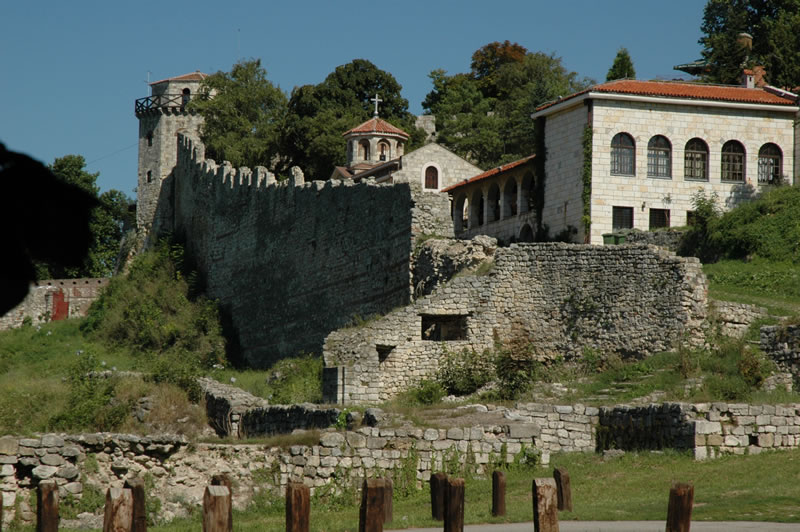 Read more
Read more
Scale Model of Despot Stefan Lazarevic Castle
The scale model of the castle of Despot Stefan Lazarevic, the work of the sculptor Kolja Milunovic, is placed approximately in the centre of the medieval castle.
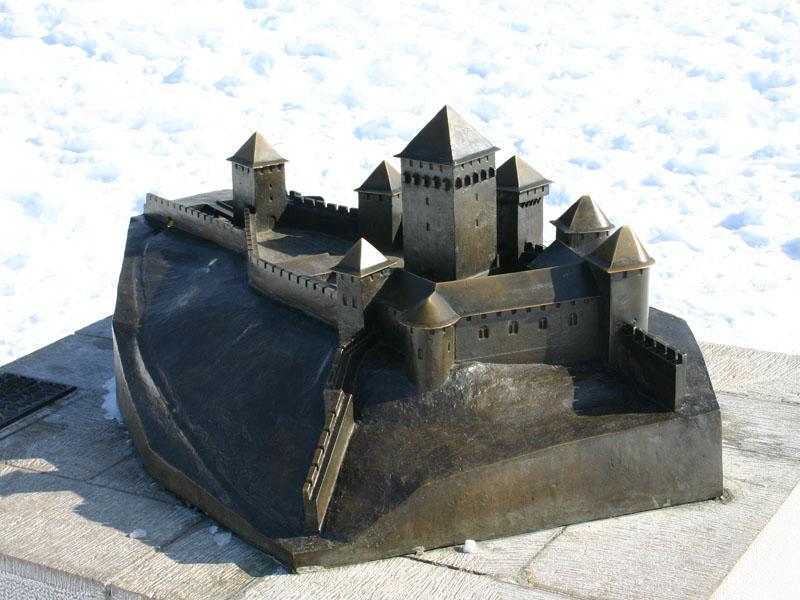 Read more
Read more
Ossuary of the Defenders of Belgrade
During the battles for the defense of Belgrade in 1915, a number of fallen soldiers were buried along the walls of the Belgrade Fortress.
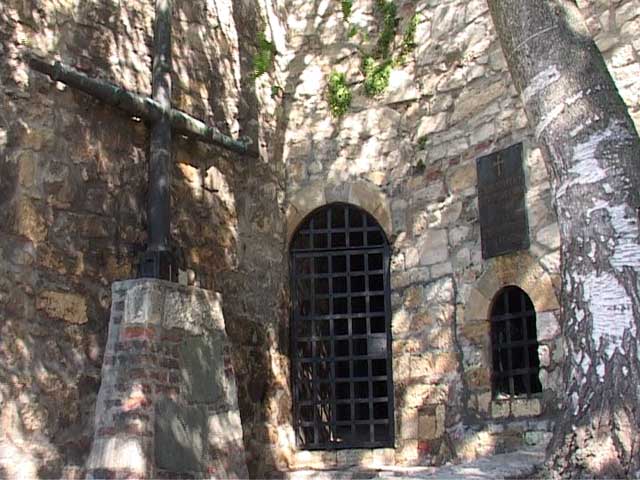 Read more
Read more
Jaksic Tower
The protruding cannon tower of the Eastern suburbs of the Lower Town is named after the Jaksic brothers
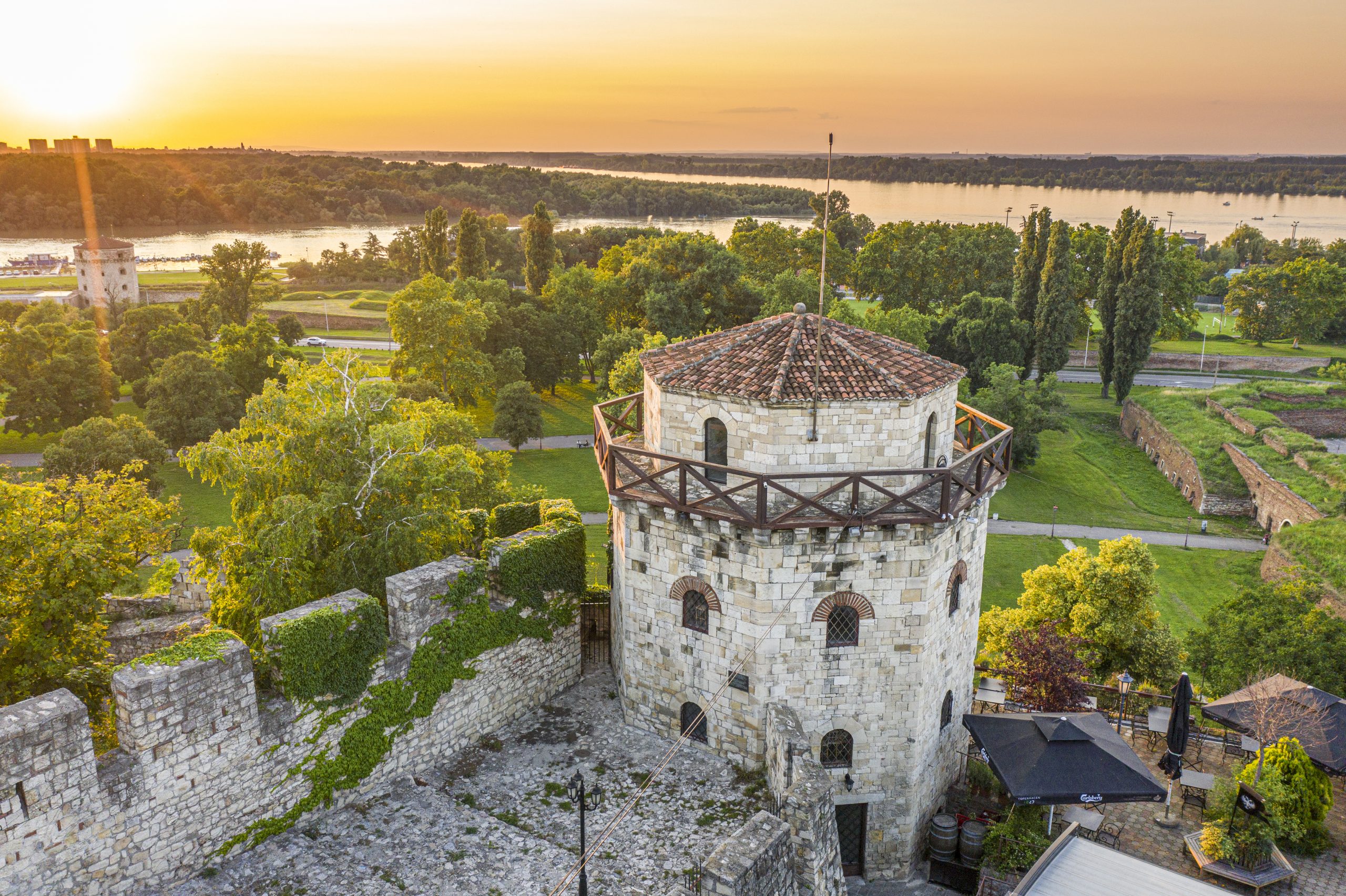 Read more
Read more
Ravelin of the Royal Gate
The ravelin, which is located in front of the gate on the Austrian plans, is called the “Lorraine Bastian” after the Lorraine regiment that was housed in the fortress during the Austrian occupation of 1688-1690.
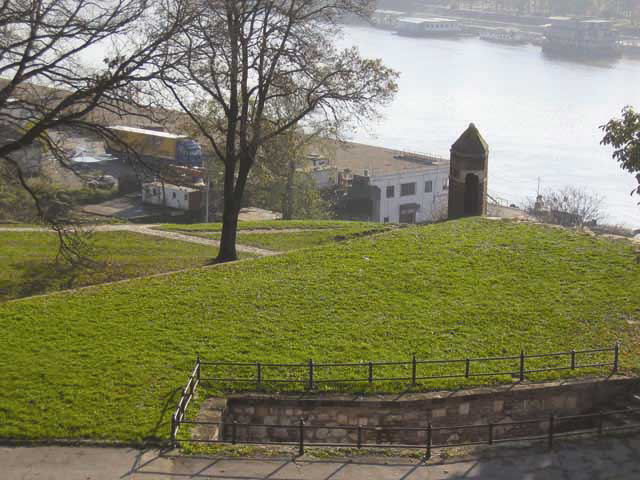 Read more
Read more
Amam — Old Turkish Bath
Although it is known as an old Turkish bath, the hammam in the Lower Town was built only in the second half of the 19th century, at a time when the Turkish garrison had already left Belgrade.
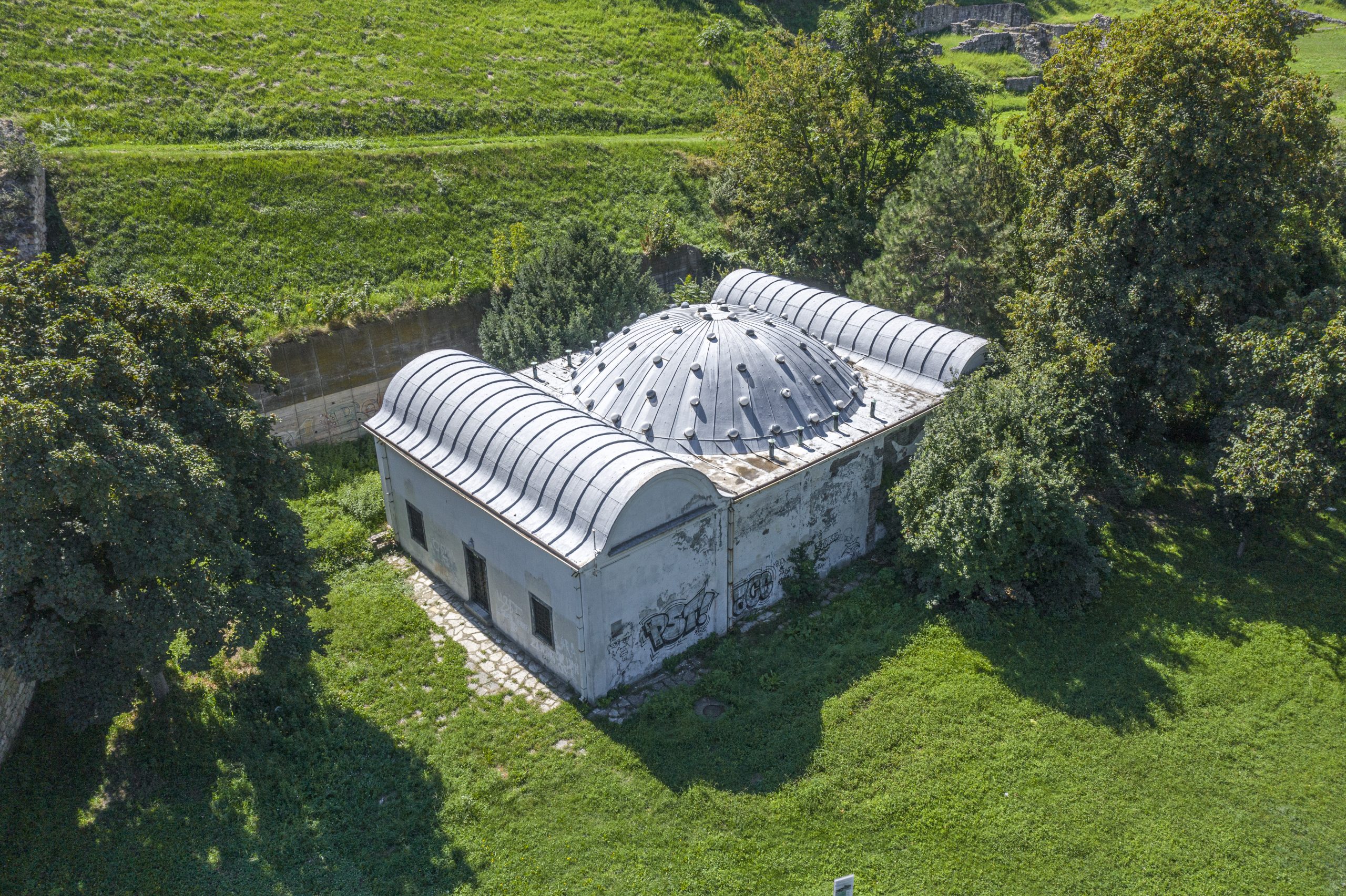 Read more
Read more
The Great Gunpowder Warehouse
An impressive building, buried in the rock of the western suburbs or the so-called Danube slopes and formed during the great Austrian reconstruction of the Belgrade Fortress.
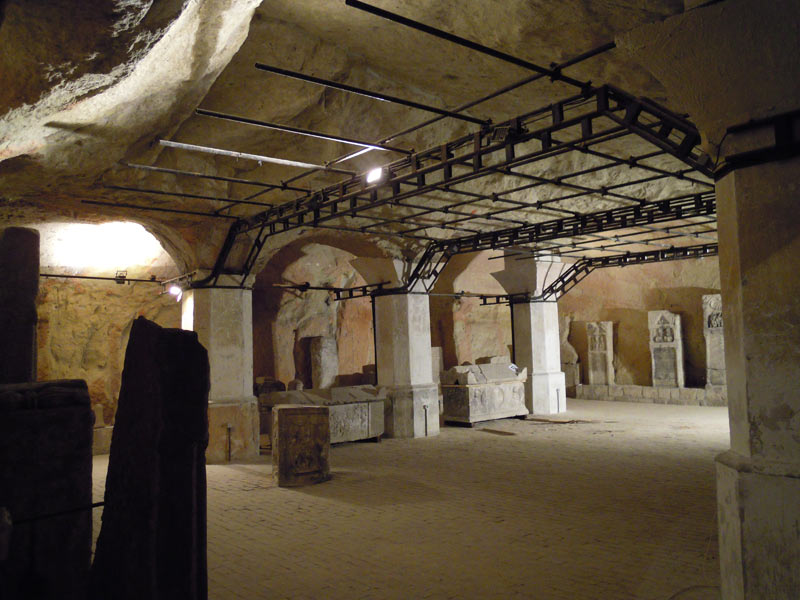 Read more
Read more
Royal Gate
Today’s gate in the southwestern rampart of the Upper Town dates from the end of the 17th century, from the time when the first artillery fortifications designed by Andrea Cornaro were built.
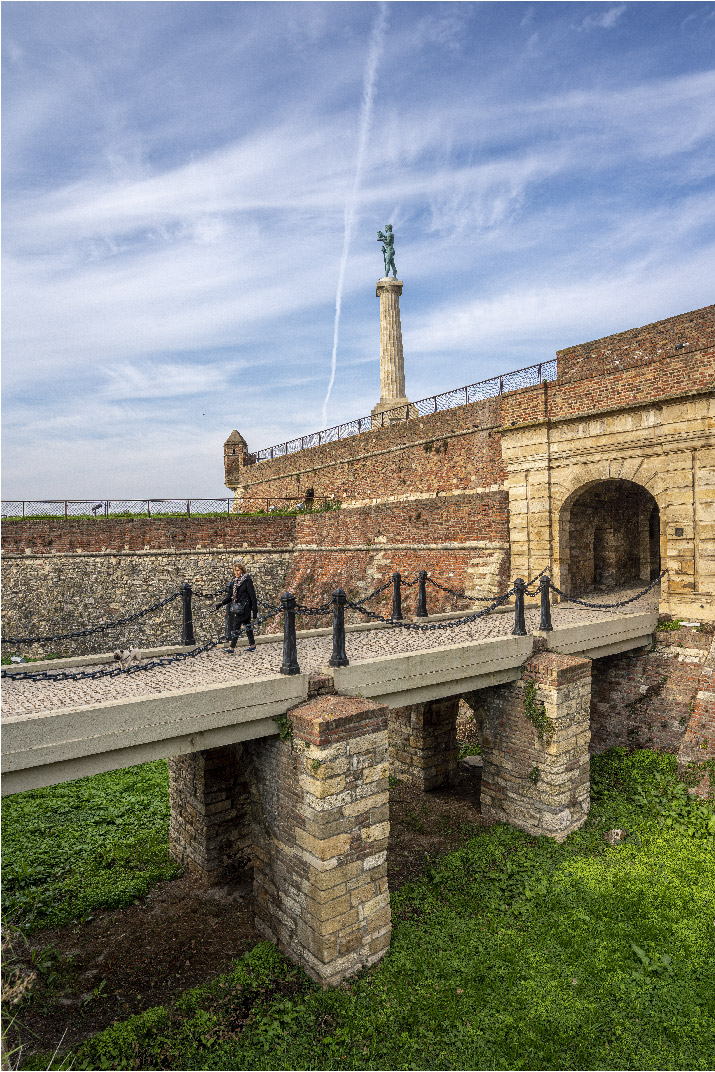 Read more
Read more
The Great/Roman Well
The Roman Well in the Upper Town is not a structure from ancient times, but is much younger, dating from the first half of the 18th century.
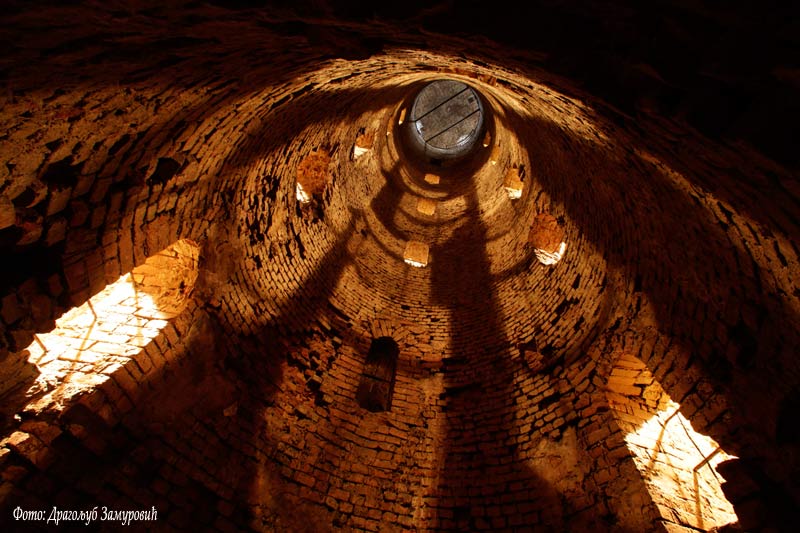 Read more
Read more
Gate of Charles VI
The gate of Charles VI is located within the medieval northeastern ramparts of the Lower Town
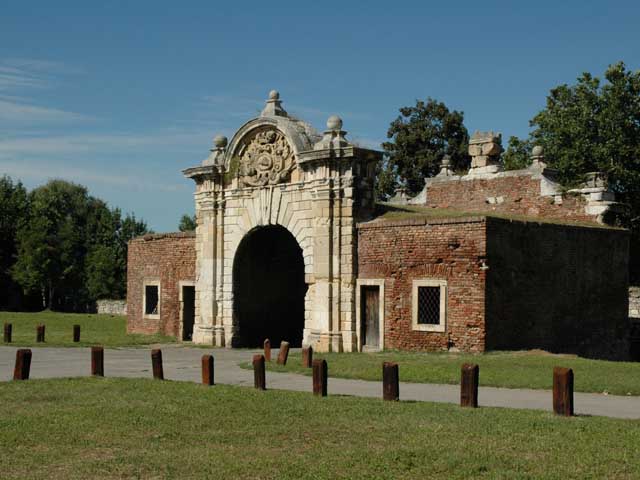 Read more
Read more
Damat Ali Pasha Turbeh
The hexagonal building in the centre of the Upper Town represents the turbeh (mausoleum) of Damat Ali Pasha and one of the few preserved Turkish buildings in Belgrade.
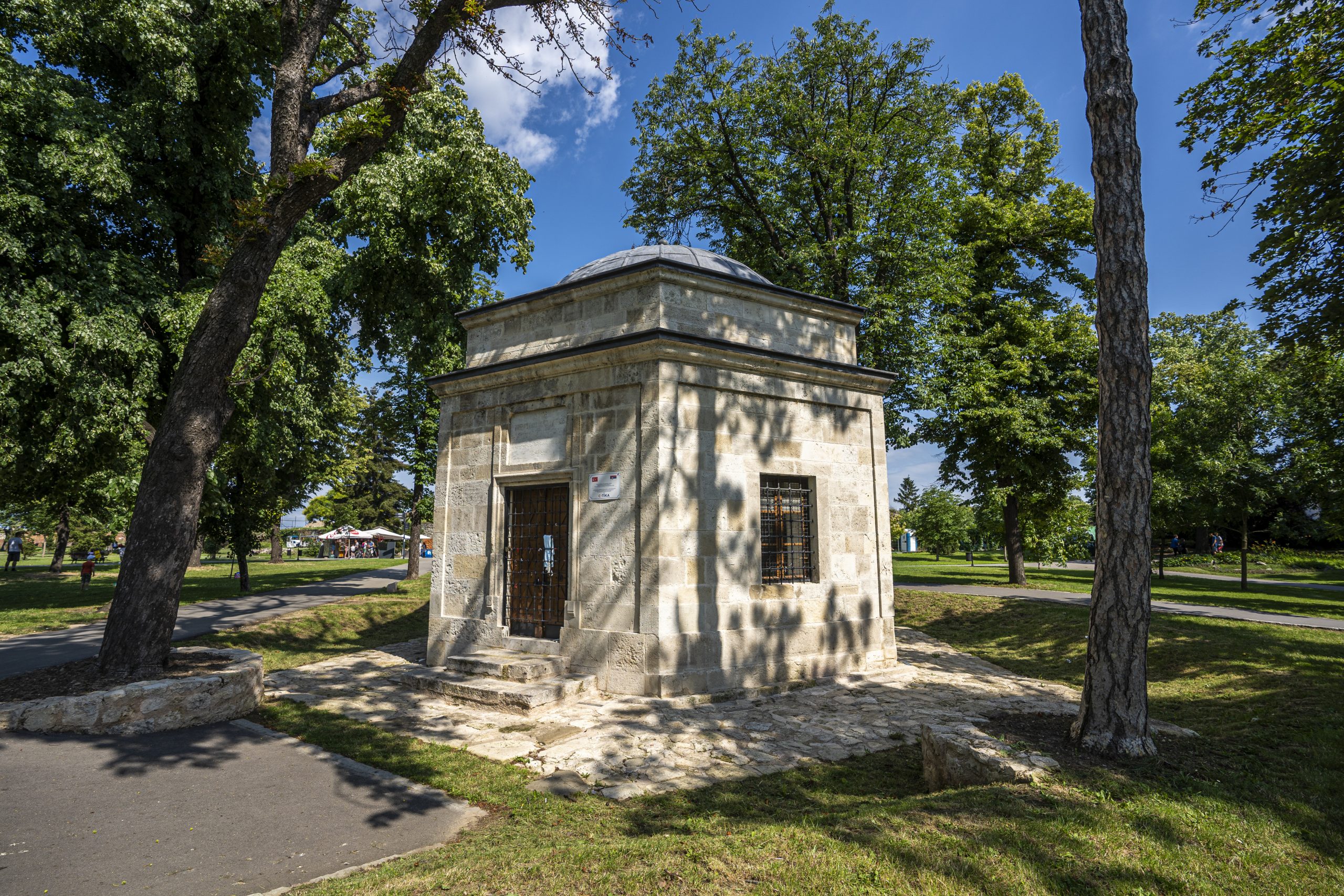 Read more
Read more
Fortress Cannon
The fortress cannon weighs several tonnes and is a good example of defensive artillery from the end of the 18th century.
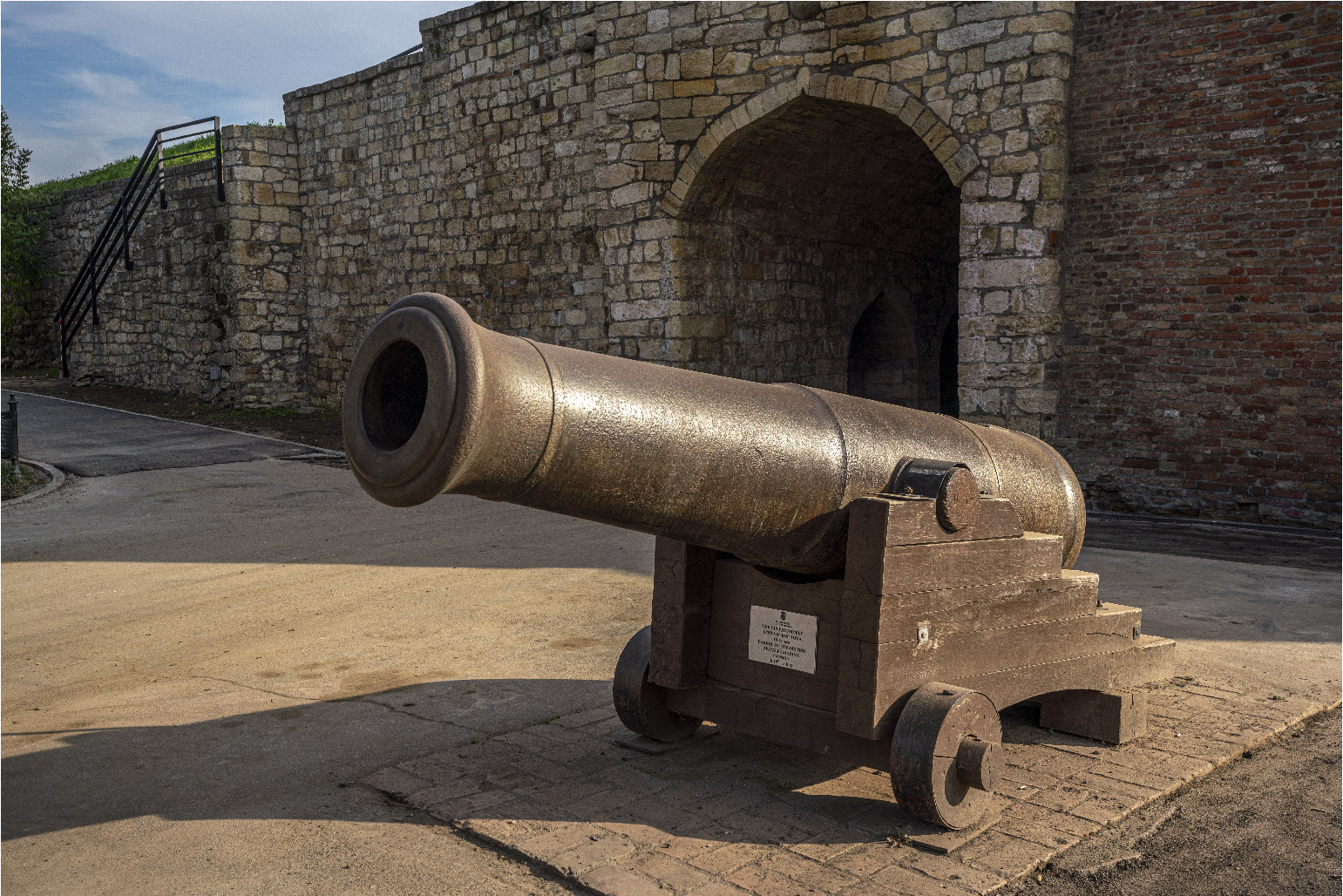 Read more
Read more
Nebojsa Tower
Today it represents the largest and best preserved tower of the Belgrade Fortress.
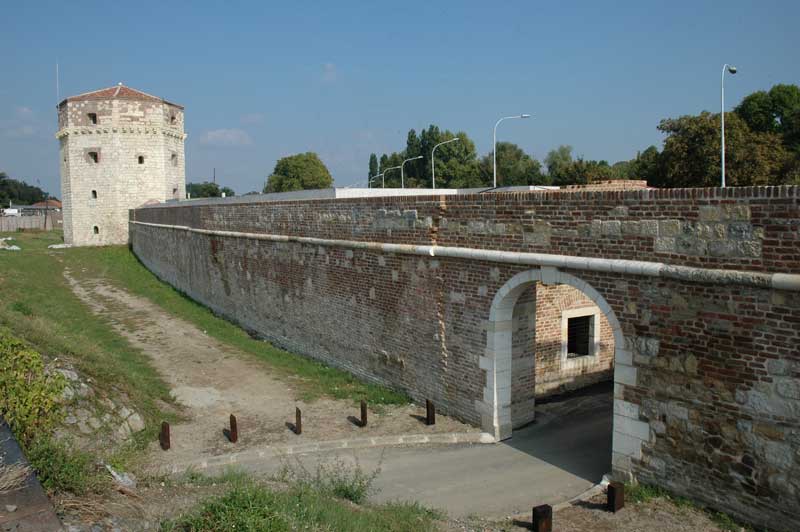 Read more
Read more
Remains of Roman Castrum
he remains of the Roman fortification, the camp of Legio IV Flavia,
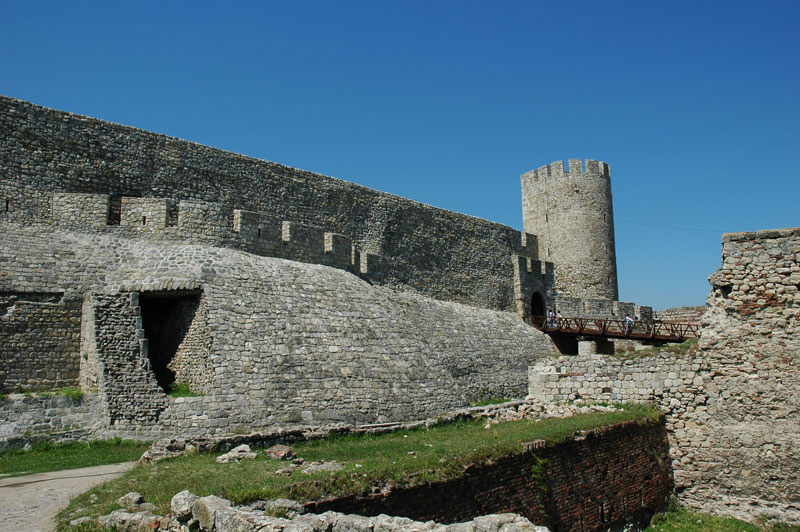 Read more
Read more
Baroque Gate
Changes in architectural concepts during Ottoman and Austrian rule over the fortress are especially visible in the Sahat Gate complex, next to which stands another gate today.
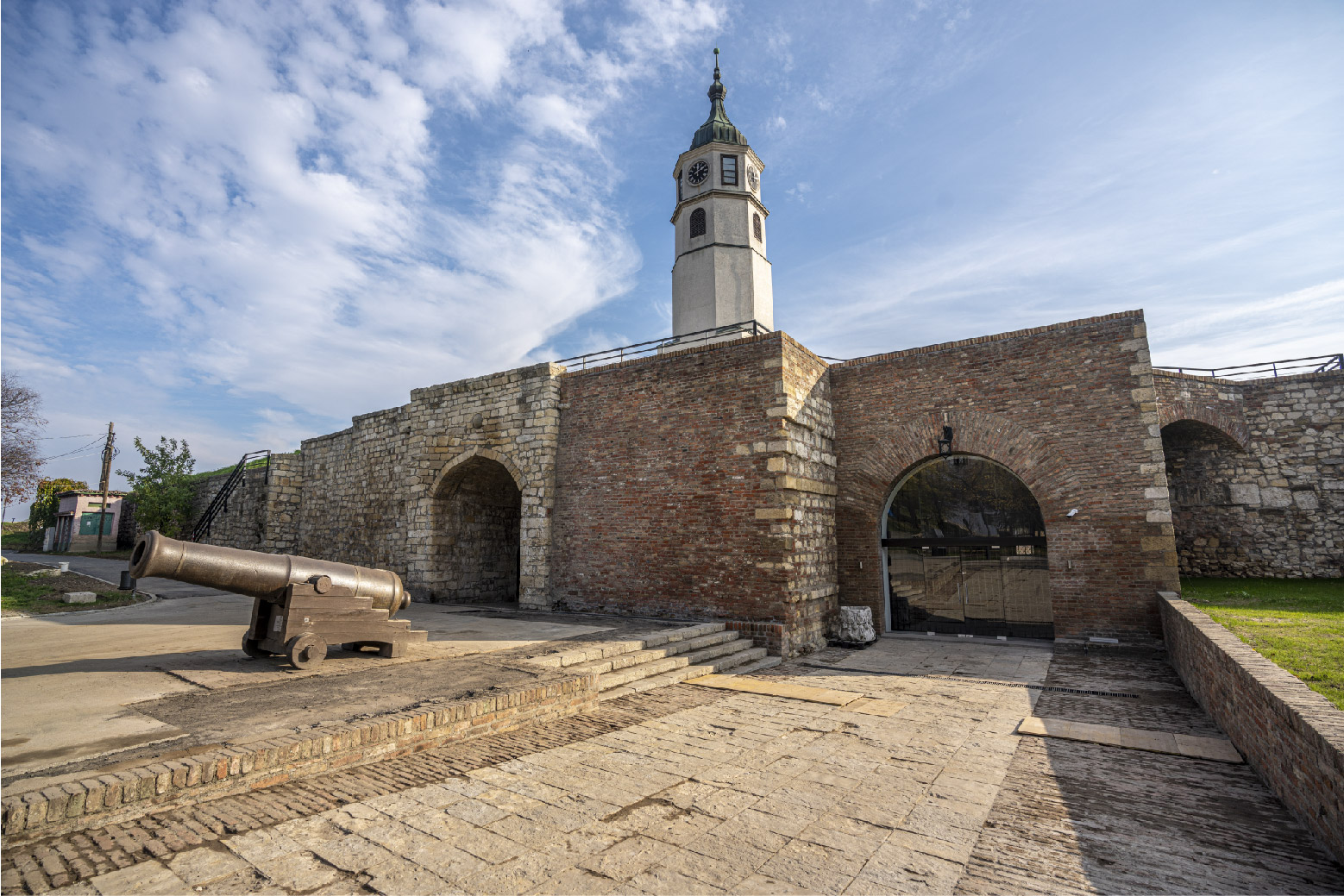 Read more
Read more
Eastern Suburbs
Today, the colloquial name Eastern Suburbs is borne by a small fortification on the most protruding part of the Danube slope.
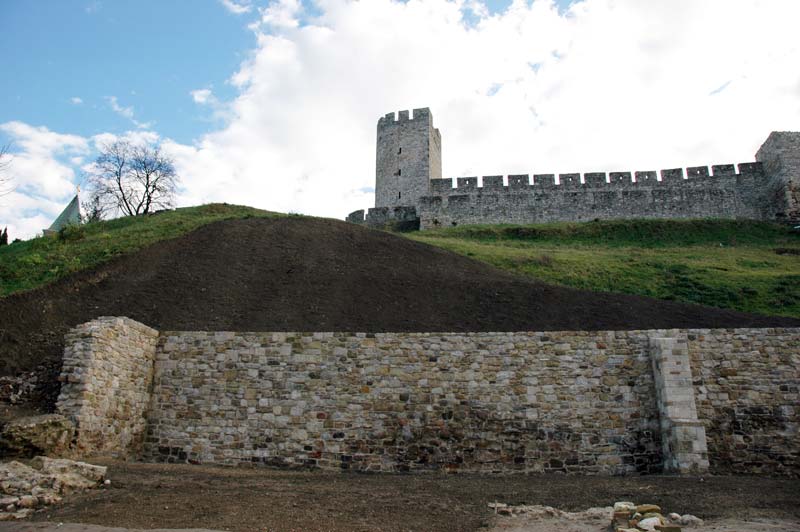 Read more
Read more
Sahat Gate
Although older in time, the gate was named after the Sahat Tower. The original gate was built in the medieval rampart, and a part of its vault built of thin bricks has been preserved to this day and can be seen inside the gate.
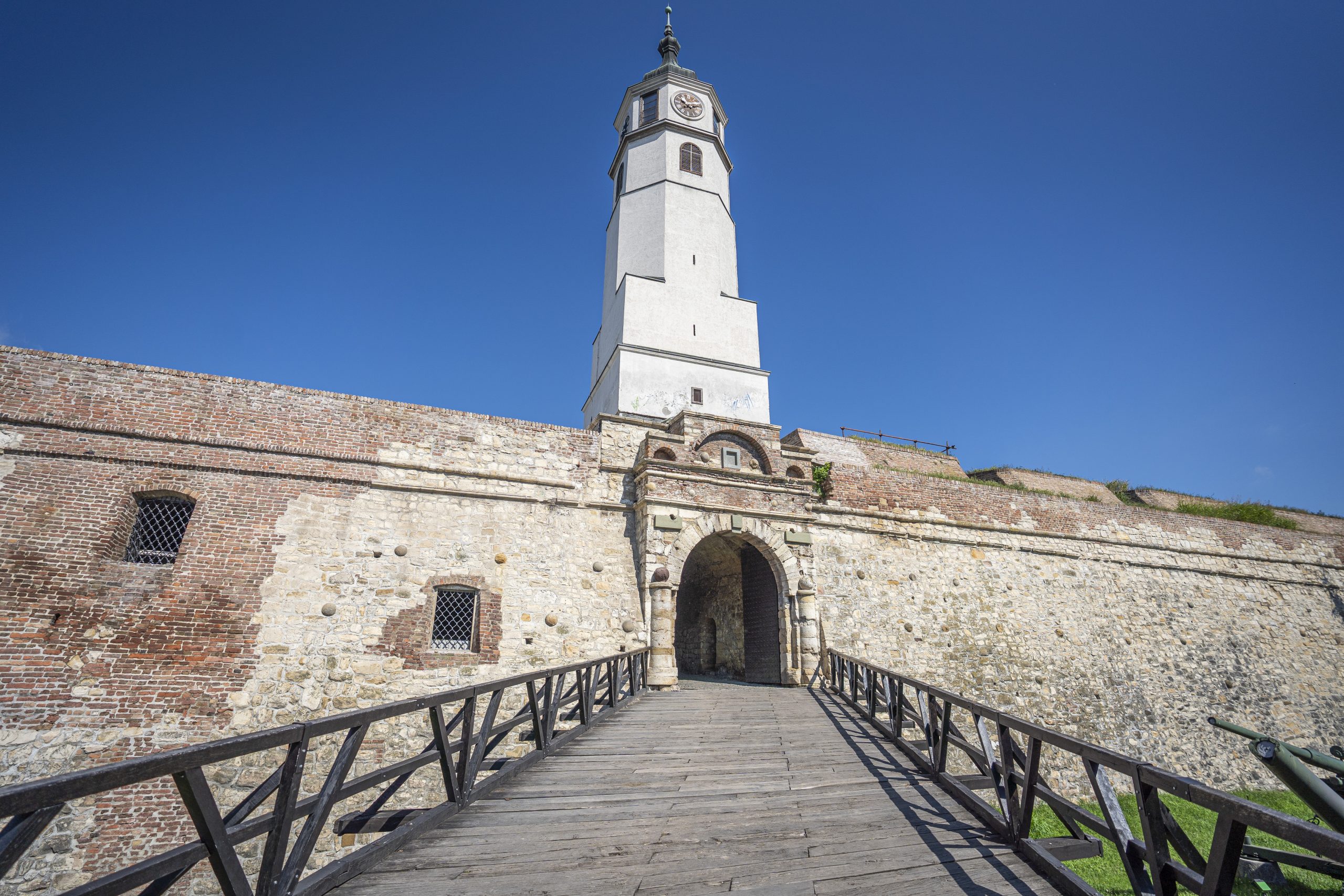 Read more
Read more
Remains of the Metropolitan Court
Archaeological excavations have revealed a part of the marble lintel of the Metropolitan Church of the Assumption of the Mother of God with the founder’s inscription of Despot Stefan Lazarevic.
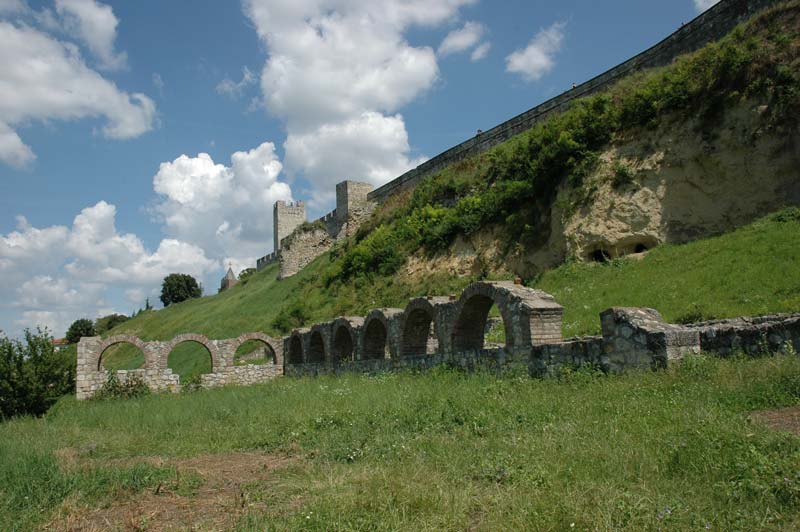 Read more
Read more
Sahat Tower
The main entrance to the Upper Town today is the gate with the Sahat Tower. The clock tower was a recognisable detail in Turkish bazaars but it rarely appeared in fortresses, so this Belgrade tower can be considered an unusual example.
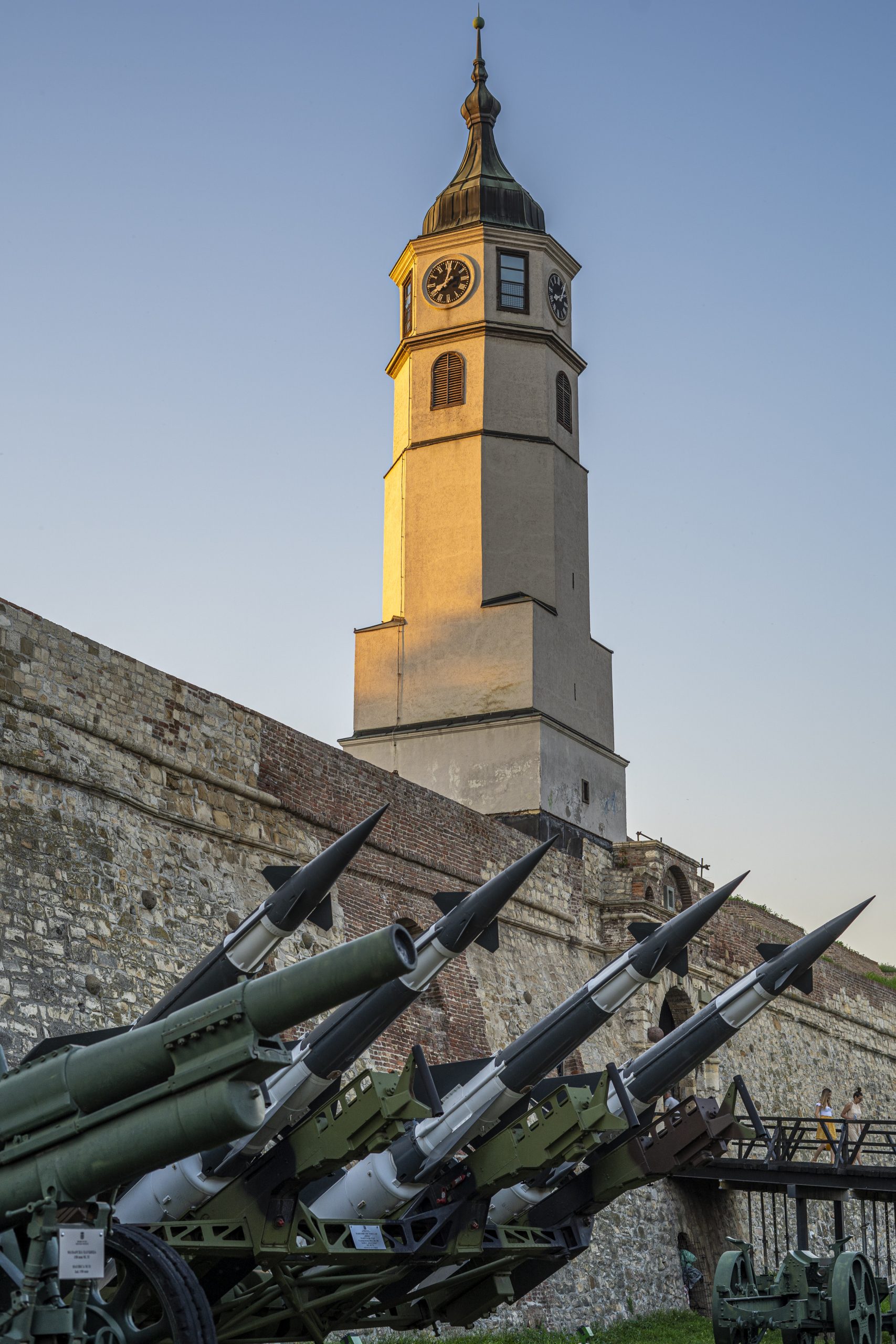 Read more
Read more
Horseshoe Tower
Located close to Nebojsa Tower, this tower was built in the 15th century and had a rectangular base.
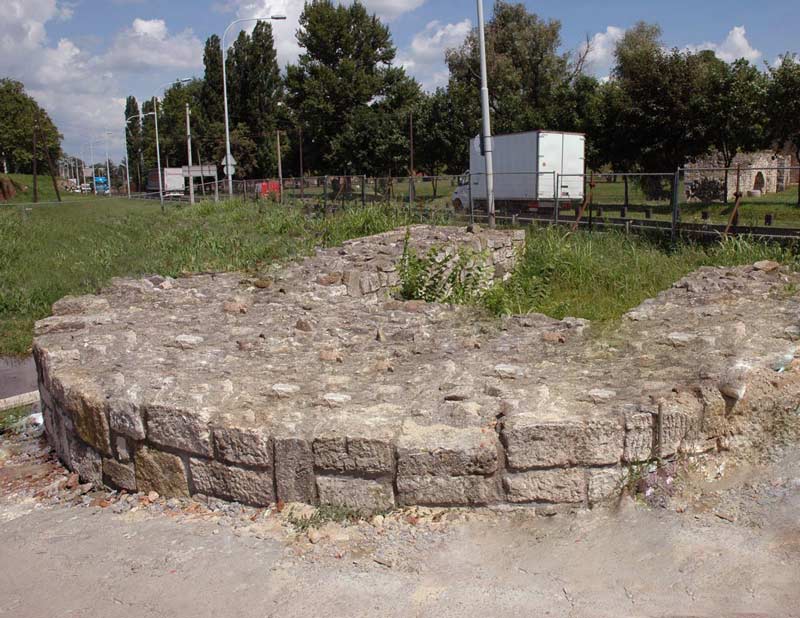 Read more
Read more
Military Museum
Although it was founded by decree of Prince Milan Obrenovic on 10th August 1878, the museum was not opened to the public until 1904.
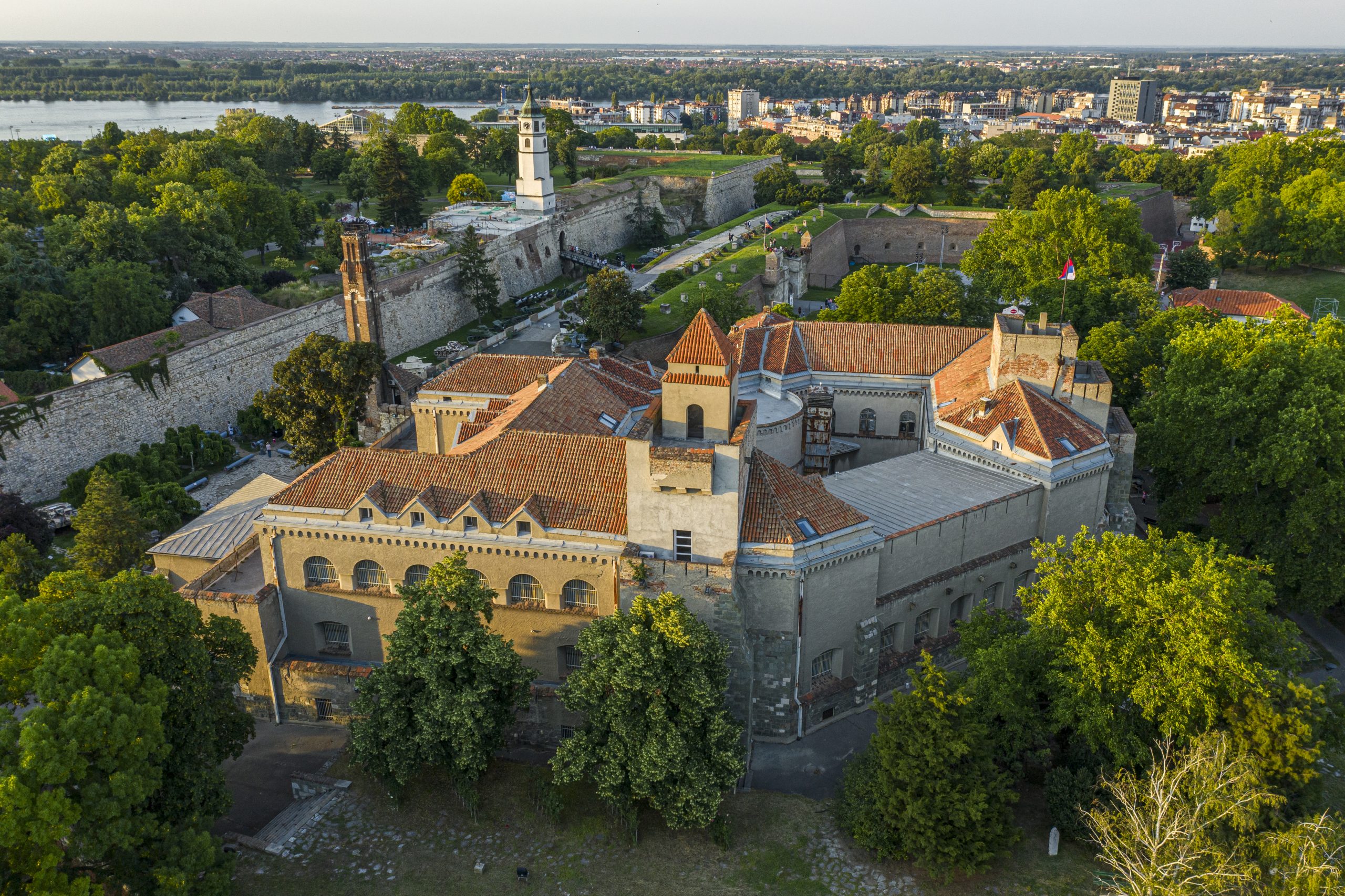 Read more
Read more
Inner Stambol Gate
During the great reconstruction works on the fortress during the Austrian rule of Belgrade in 1717–1736, the fortifications of the southeast front were built on the basis of the design of the engineering colonel Nicolas Doxat de Demoret.
Coastal Rampart
It was created in the 1920s for the needs of defending the city from rivers, from the western suburbs to Nebojsa Tower.
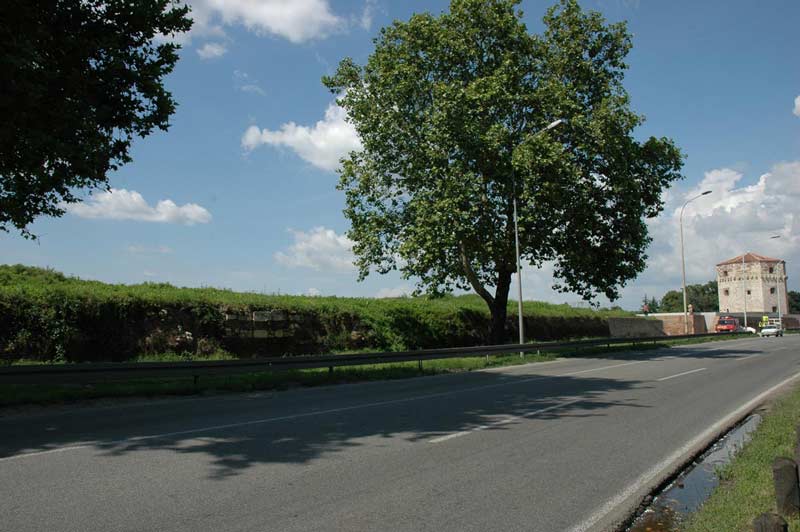 Read more
Read more
Ancient Lapidarium
A part of the rich treasury of Roman stone monuments from Singidunum was placed next to the building of the Institute for the Protection of Monuments of the City of Belgrade.
Bunker
The military bunker in the Upper Town of the Belgrade Fortress (near the Victor monument) was built in the early 1950s.
Sava Promenade
The main Kalemegdan promenade offers views of the Sava River and, beyond that, of New Belgrade and Zemun.
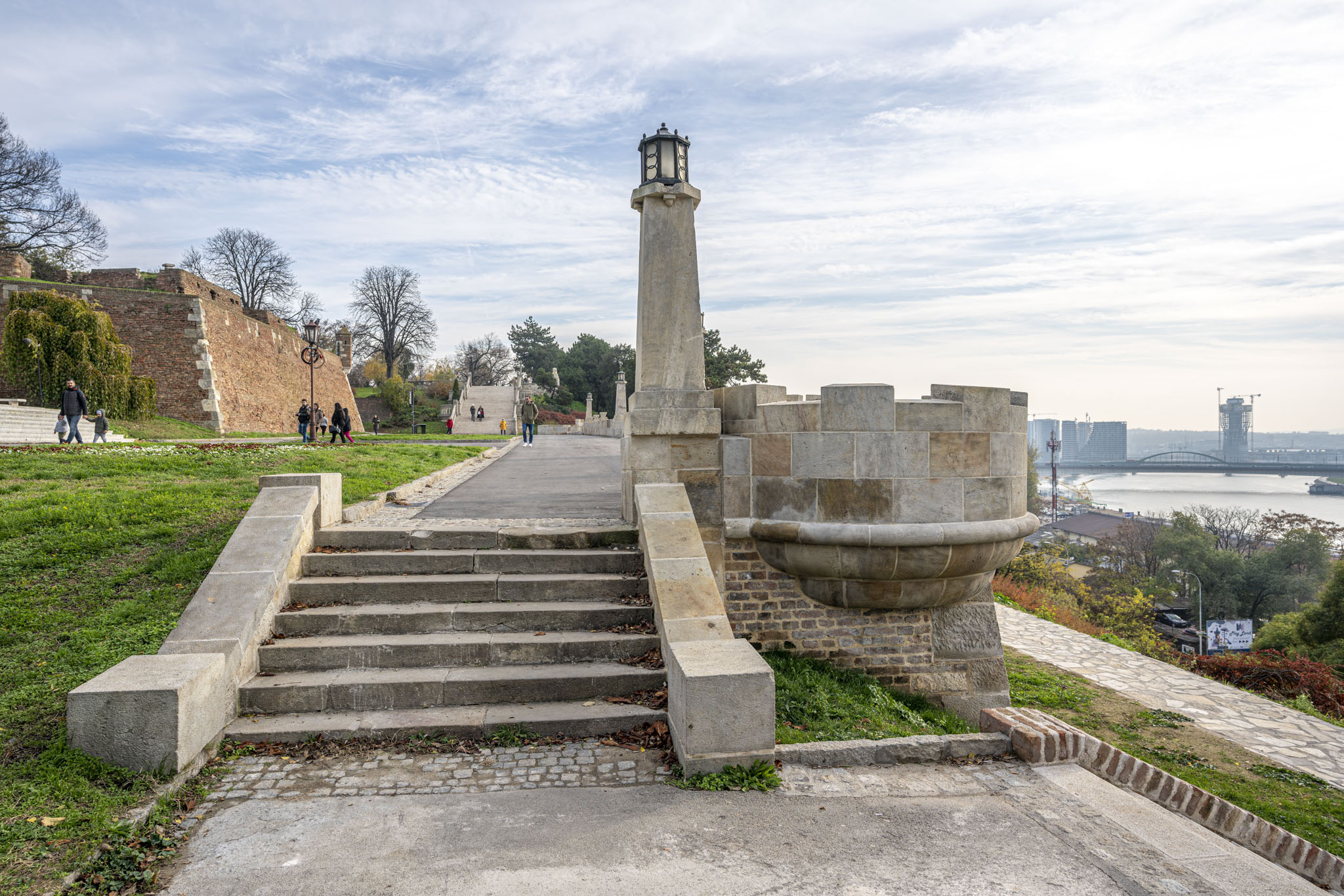 Read more
Read more
The Great Ravelin Guardhouse
Approximately halfway between the gates on the Great Ravelin, there is a fortress guardhouse facing the Stambol Gate.
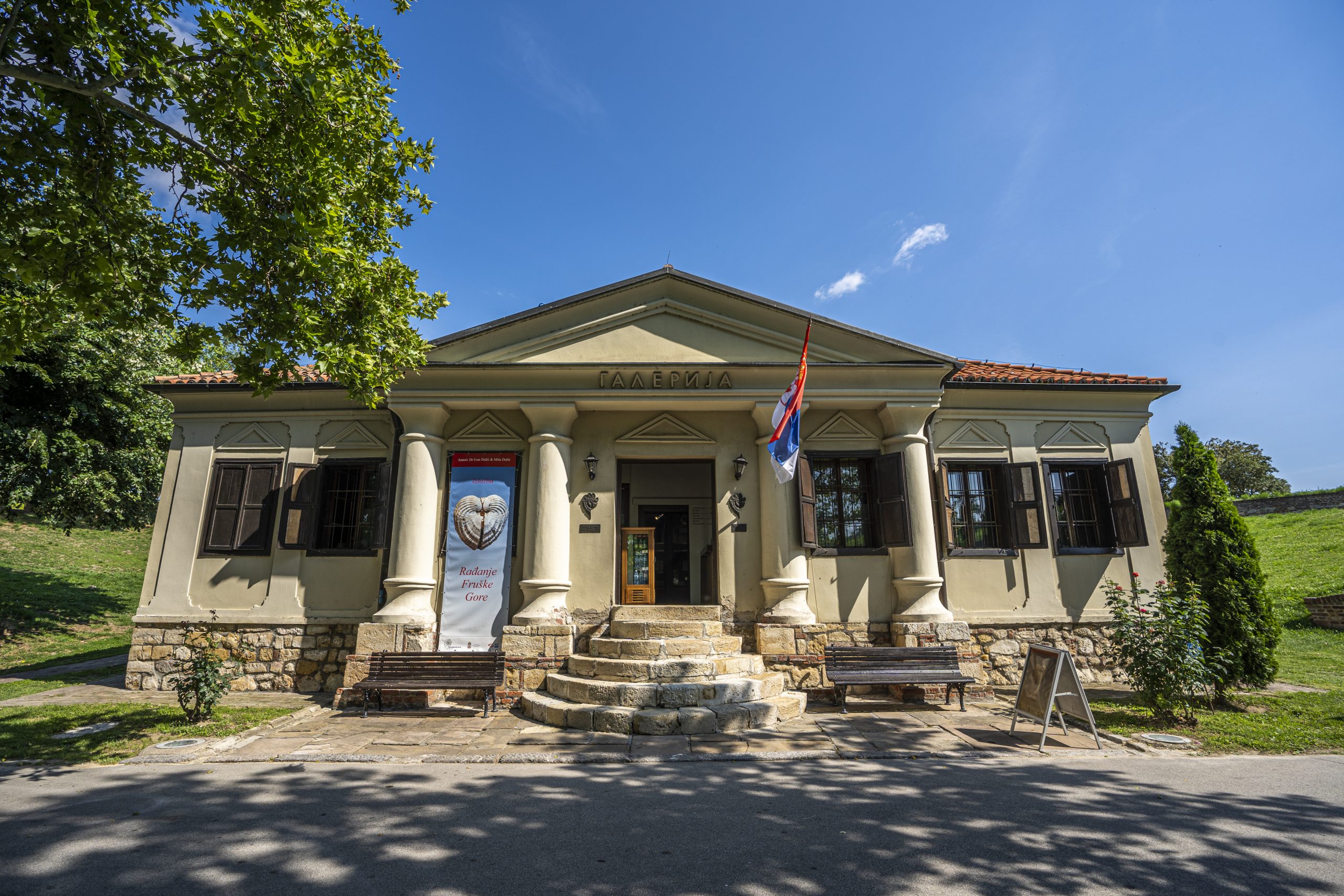 Read more
Read more
Great Ravelin
During the 18th century, in three thorough reconstructions, the fortress in Belgrade was turned into a modern bastion artillery fort.
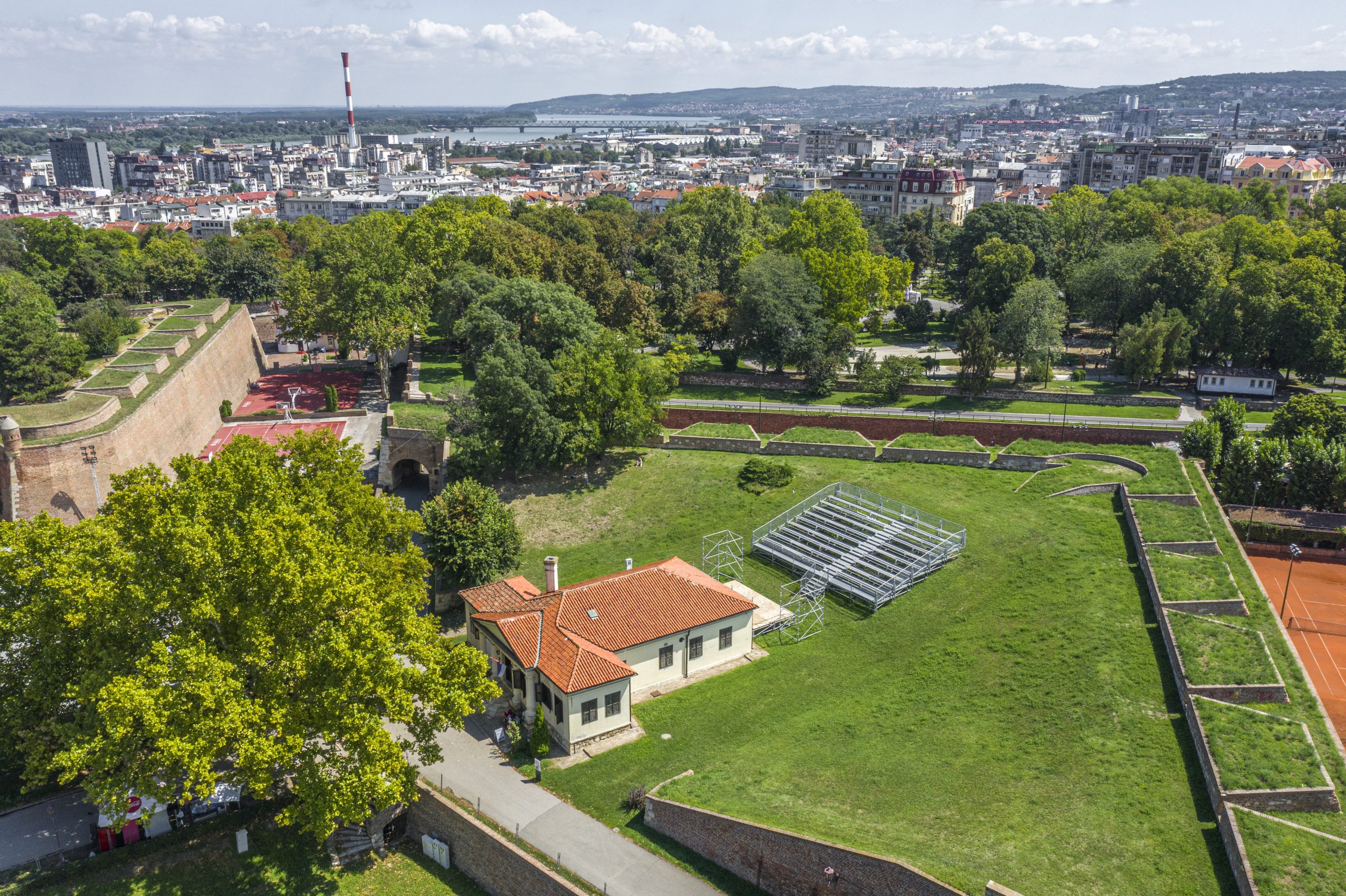 Read more
Read more
Outer Stambol Gate
The Outer Stambol Gate is located in the direction of the main entrance to the fortress. A wooden bridge was originally placed in front of it, which was replaced by an earthen embankment at the end of the 19th century
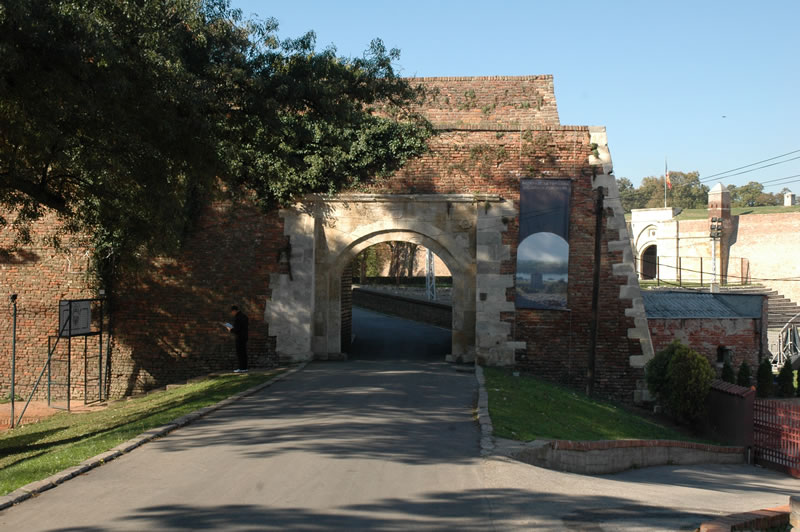 Read more
Read more
Borisav Stankovic Memorial Bust
The memorial bust to Borisav Stankovic was erected in 1976. It is the work of Belgrade sculptor Nebojsa Mitric.
Borisav Stankovic (1876–1927) was a great Serbian writer. He was born in Vranje, where he attended primary and secondary school. He continued his education in Nis and Belgrade. He is one of the most influential founders of modern Serbian prose. His most famous work is Impure Blood.
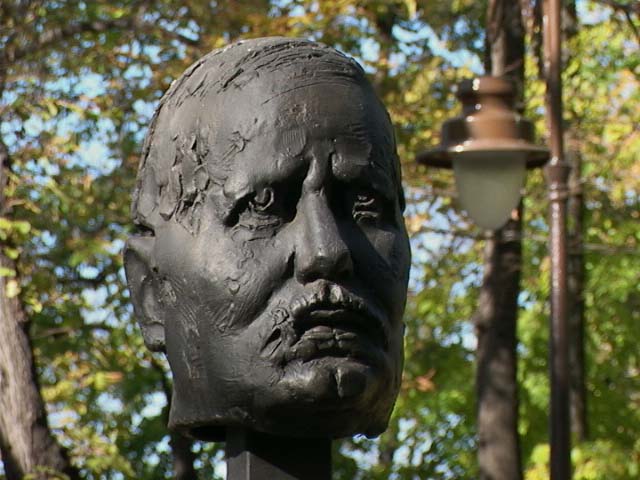 Read more
Read more
Ivan Goran Kovacic Memorial Bust
The memorial bust to Ivan Goran Kovacic is the 1969 work of sculptor Vojin Bakic. Ivan Goran Kovacic (1913–1943) was a writer, translator and journalist. His poem The Pit has undergone a large number of editions and translations. The 1948 French edition was illustrated by Pablo Picasso.
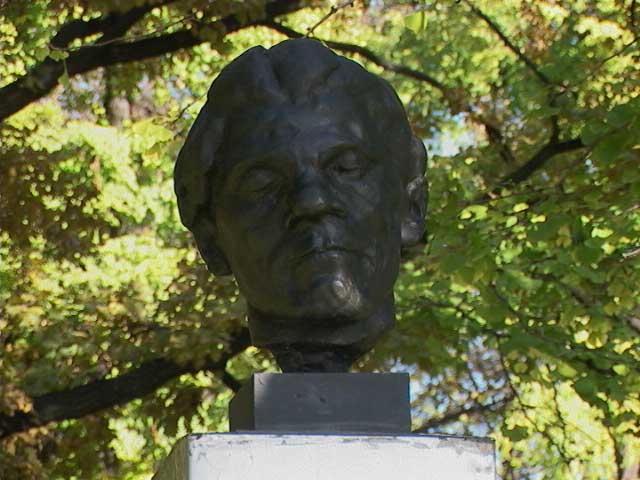 Read more
Read more
Jovan Subotic Memorial Bust
The memorial bust to Jovan Subotic was erected in 1896 and is the work of sculptor Djordje Jovanovic.
Jovan Subotic (1817-1886), was a doctor of philosophy, lawyer, Serbian poet and politician.
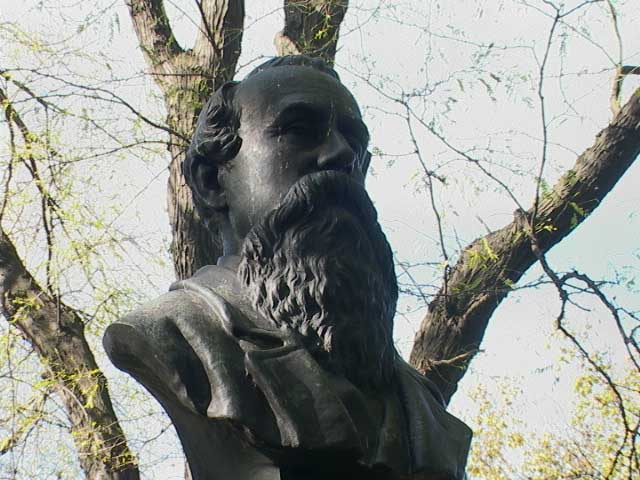 Read more
Read more
Monument to Branko Radicevic
The Monument to Branko Radicevic was erected in 1955. It is the work of sculptor Aleksandar Zarin. Branko Radicevic (1824–1853), a Serbian romantic poet, originally wrote in German and then joined the Serbian literary circle gathered around Vuk Karadzic. He died in Vienna and in 1883 his remains were transferred and buried in Strazilovo, a wooded valley in Fruska Gora.
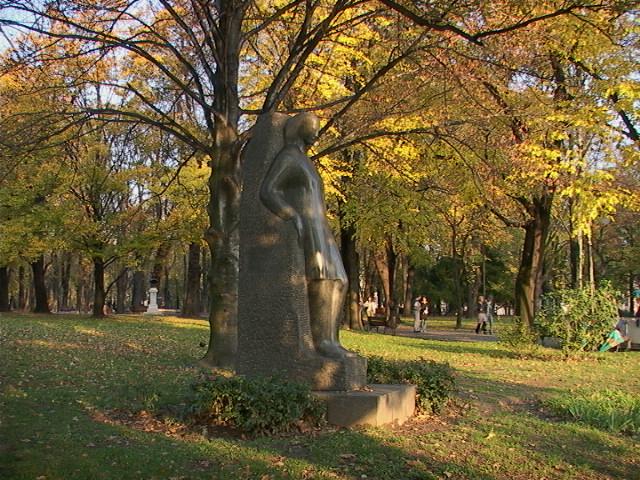 Read more
Read more
Belgrade Zoo
Belgrade Zoo, also known as the Garden of Good Hope, is located within the Belgrade Fortress, more precisely in Mali Kalemegdan.
For more information please visit www.beozoovrt.rs
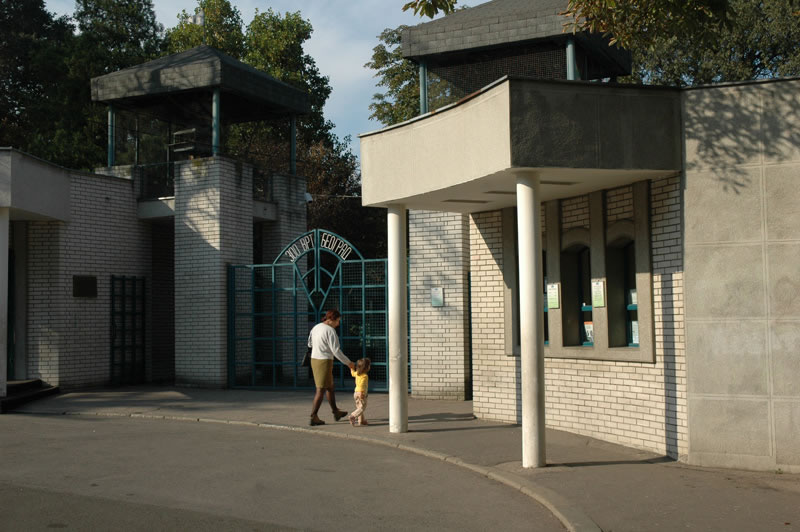 Read more
Read more
Monument Honouring Serbian and Russian Soldiers Killed in World War I
Erected in 2014 as part of the event marking the centennial of the beginning of the First World War, this monument was a gift from he Centre of National Glory of Russia and the Foundation of St. Andrew the First-Called.
Kalemegdan Park
In the middle of the 19th century, after the fortress lost its military function, the arrangement of the empty space that separated the city from the fortifications began, following the example of the parks of European metropolises of the time.
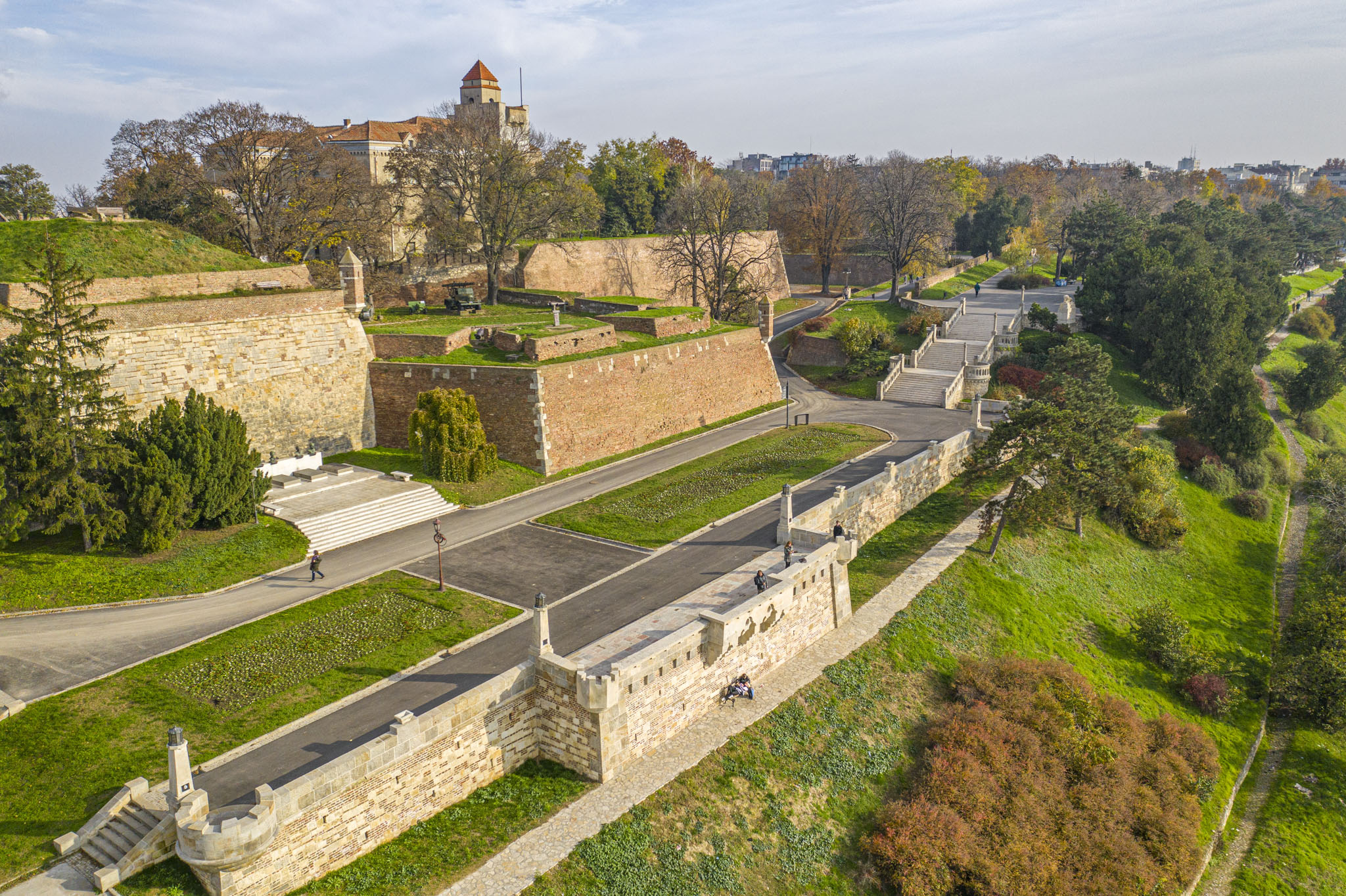 Read more
Read more
Japanese Fountain
Built in August 2010, the Japanese fountain is a sign of gratitude to the Japanese people for their donations to the city of Belgrade. The fountain is the work of sculptor Bojan Mitrovic
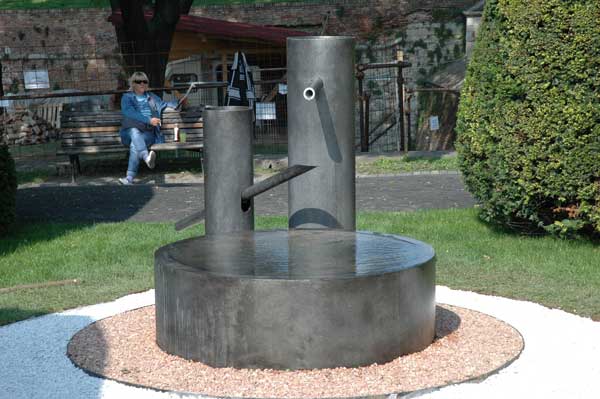 Read more
Read more
Keys Handover Memorial
This memorial serves as a reminder of an event that marked the liberation of Serbia from Turkish rule in the spring of 1867. The work of sculptor Mihailo Paunovic, the memorial was erected in 1967 on the centennial of the historic occasion. The exact spot where the keys were handed over is located a few metres behind the memorial and is marked by a small earthen mound around which thujas are planted.
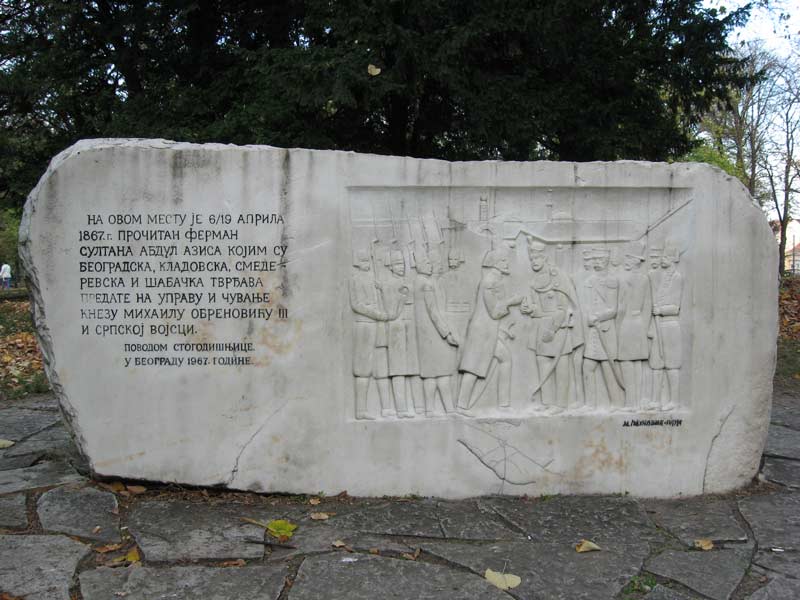 Read more
Read more
Monument of Gratitude to France
The Monument of Gratitude to France is located in the part of the park decorated in the style of French parks, with tall and finely shaped conifers and flower beds. It was erected as a sign of the gratitude of the Serbian people for the help that France provided them during the First World War, as evidenced by the inscription on the back of the pedestal: “We love France as it loved us in 1914–1918”.
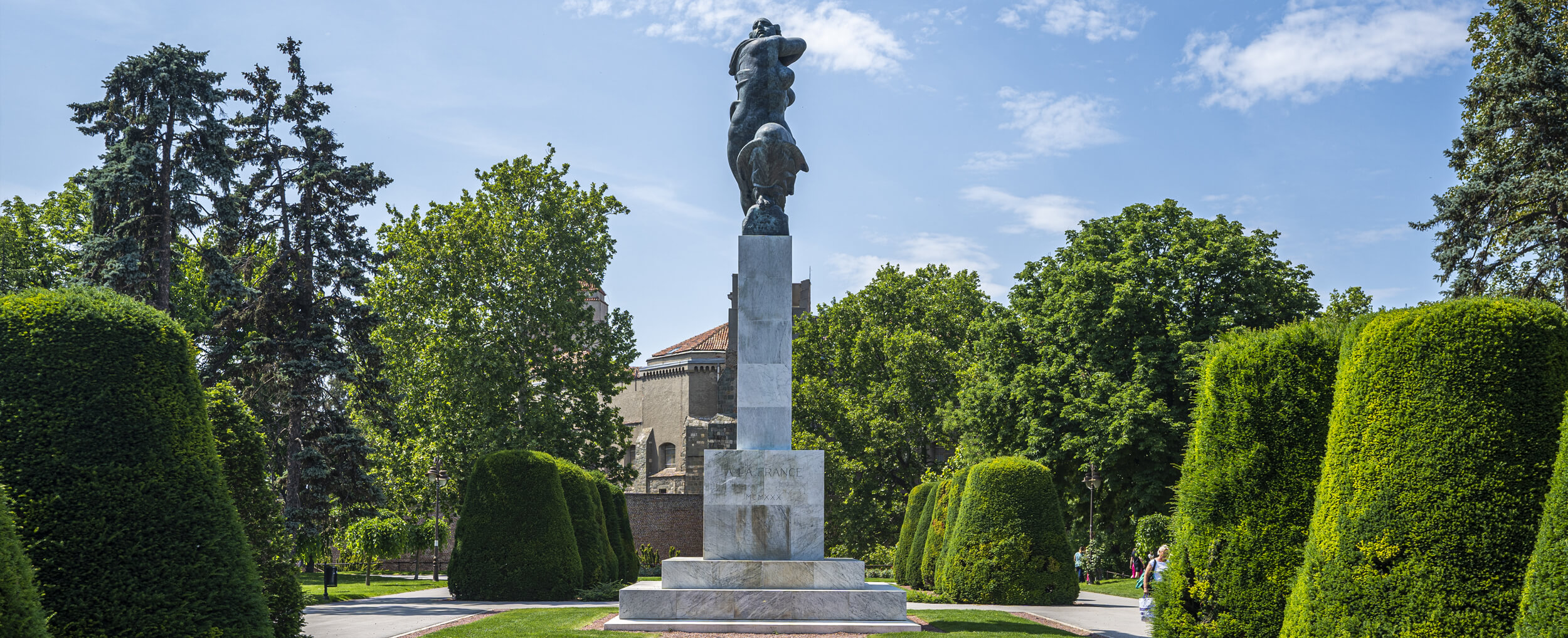 Read more
Read more
The Fisherman Fountain
The fountain is located in the centre of the oldest part of Kalemegdan Park. The sculpture of a fisherman fighting a snake, cast in bronze, was commissioned by Belgrade municipal officials.
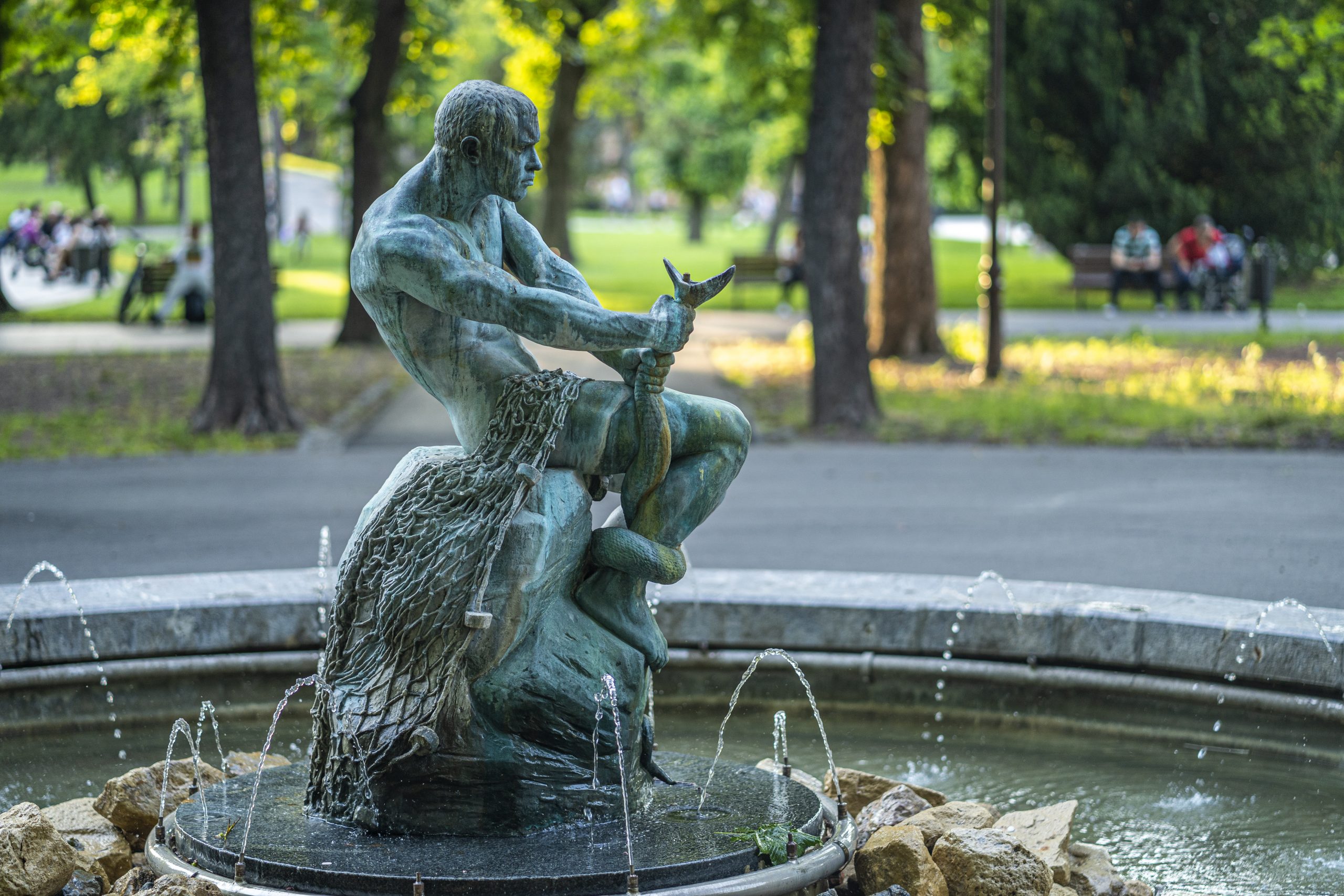 Read more
Read more

